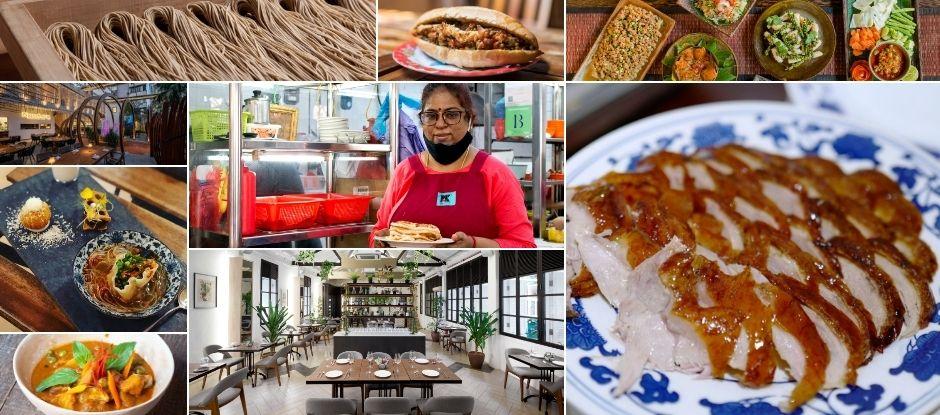Ahead of the ninth edition of Asia’s 50 Best Restaurants, we celebrate the Essence of Asia, a collection of restaurants that represent authenticity, culinary culture and community focus, presented in association with S.Pellegrino & Acqua Panna
From street vendors to champions of sustainability, from time-honoured institutions to pioneering newcomers, the Essence of Asia collection reflects the breadth of the continent’s gastronomic riches. And at a time when the hospitality sector across Asia is emerging from a prolonged crisis, it provides travellers and gourmets with an invaluable guide to vibrant local dining spots while also celebrating some of the unsung heroes of the food community.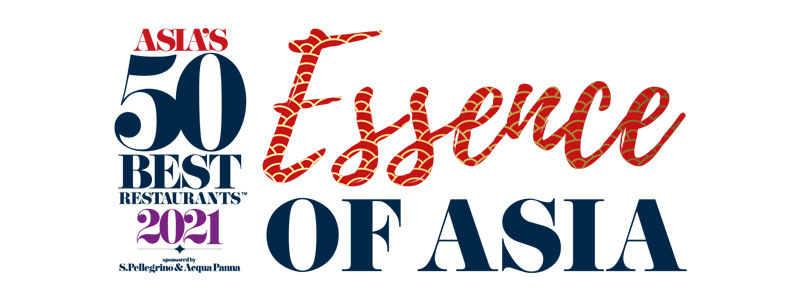
The collection comprises establishments in 49 cities across 20 countries and territories, stretching from Pakistan across to Japan. Presented country by country, this unranked selection has been created based on recommendations from the chefs of Asia’s 50 Best Restaurants 2020 and 2021, 50 Best’s Academy Chairs, as well as trusted gourmets in the region. It sits in parallel with the Asia’s 50 Best Restaurants list, sponsored by S.Pellegrino & Acqua Panna, revealed on Thursday, 25th March from 4.30pm (HK/Sing).
Essence of Asia features the sort of places that honour culinary traditions, revive indigenous cuisines or rediscover centuries-old recipes, as well as many that play a key role supporting and connecting their communities. So as travel plans become a real possibility once again, check out these guardians of the Asian food galaxy.
BANGLADESH
Haji Biryani, Dhaka
Image: Fardeen Yousuf Bhuiyan
Set in the heart of Old Dhaka, this casual venue is one of the best-established food joints in town, famed locally for its chevon biryani: goat’s meat with richly seasoned rice. The restaurant originated as a roadside food stand in 1939 and is now run by the third-generation son, Haji Mohammad Shahed, with two other outposts in Dhaka. This original (and arguably best) Haji Biryani progeuvides views over the city as diners savour the mind-blowing biryani – best enjoyed with something off the long list of soft drinks with a Bengali slant.
Kasturi, Dhaka
It is a common misconception that Bengali food should only be eaten at home or on feast days. Kasturi blows this myth into the sky, with Vogue India gushing that it is a must-visit, and ‘the best place for local Bangla fare’. There are several other branches scattered around Bangladesh and India – and others with similar names in the city itself – but this, the first, opened 70 years ago, is a great place to start. Basic-sounding menus items, such as ‘fish and rice’, arrive bursting with flavour and surprisingly nuanced spicing, with a traditional Bengali pudding providing a cooling counterpoint.
CAMBODIA
Nesat Seafood House, Phnom Penh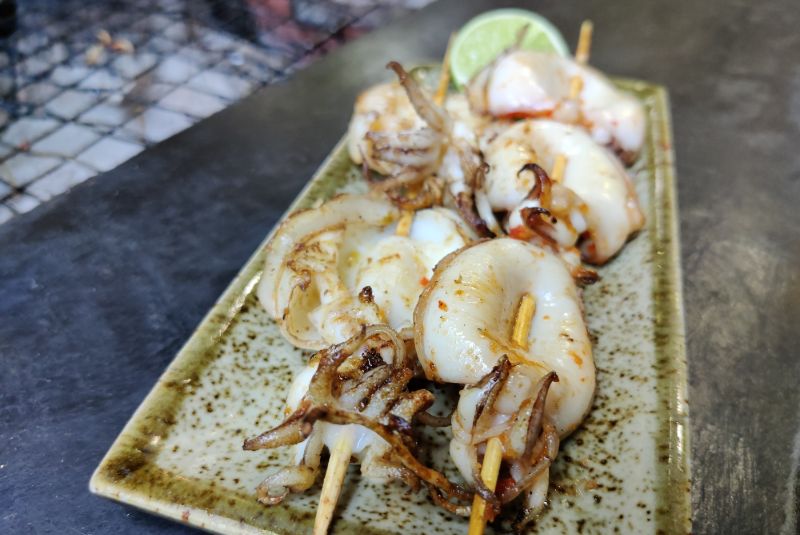
Meaning ‘fishing’ in Khmer, Nesat is at the vanguard of Phnom Penh’s not inconsiderable seafood offering. Whether you grab a table on the terrace, which sports a laid-back beachside aesthetic, or inside, where an open kitchen allows a bird’s eye view of the action, prepare to be wowed by the trio at the rudder: Thim Sophal, a 27-year-old architect, who embarked on the culinary odyssey of a lifetime with friends Chea Sopheavy and Sebastiaan Roodnat. Prices represent real value for money – a generous portion of four Kampot crabs costs 31,450 Cambodian riels [$7.75] – and service is super-efficient.
Lum Orng Farm to Table, Siem Reap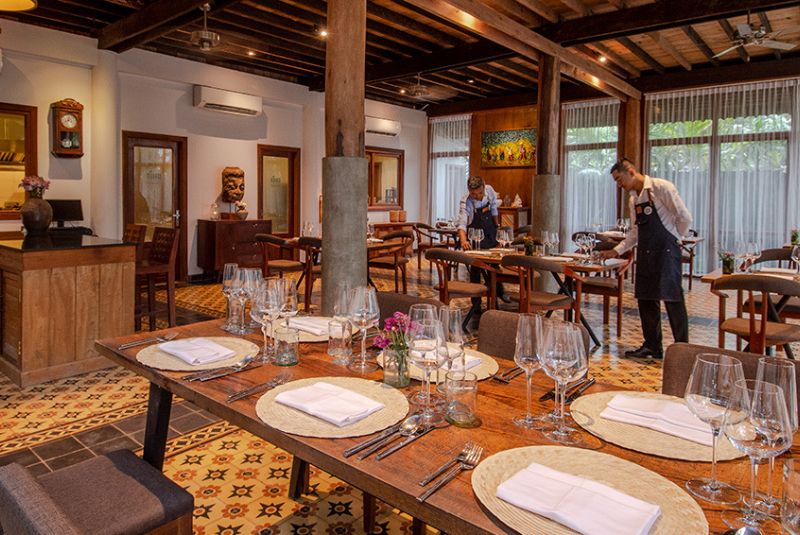
Cambodia’s first proponent of the farm-to-table movement, Lum Orng is perfectly positioned at the departure point for Angkor Wat, its setting a leafy, Instagram-worthy oasis at the end of a red dirt road. Sending out superb New Mekong cuisine is chef Sothea Seng, whose organic ingredients, including 25 varieties of fruit and veg, come from his own land, along with additional speciality produce from neighbouring farmers. Seng, the son of a chef, discovered a love of cooking at the tender age of 10. His work today injects new vitality into the same recipes that his forebears would have been feasting on many moons ago.
The Sugar Palm, Siem Reap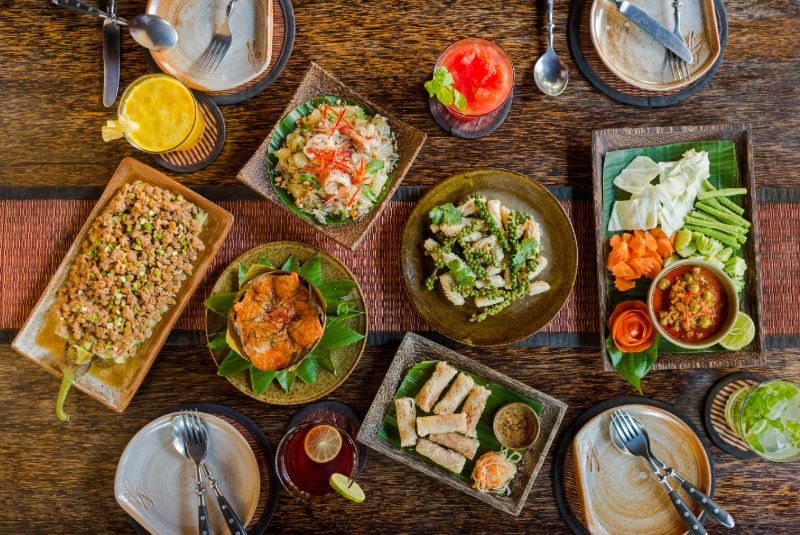
Image: Terence Carter
Amok (steamed, curried fish or meat) is one of the pillars of Cambodian cuisine, and The Sugar Palm’s version alone is regarded by many as worth traveling to Siem Reap for. Taught to cook Khmer cuisine by her mother and grandmother while displaced due to the conflict of the 1970s, Kethana Dunnet returned in 2002 to open a restaurant in Phnom Penh first, before expanding with this Siem Reap outlet. The dining room – all dark timber floors, ceiling fans, shuttered windows and high ceilings – invites lingering. Outside the kitchen, Dunnet has consulted for visiting chefs, from Gordon Ramsay to Luke Nguyen, and makes regular appearances on TV cookery shows.
MAINLAND CHINA
Li Qun Roast Duck, Beijing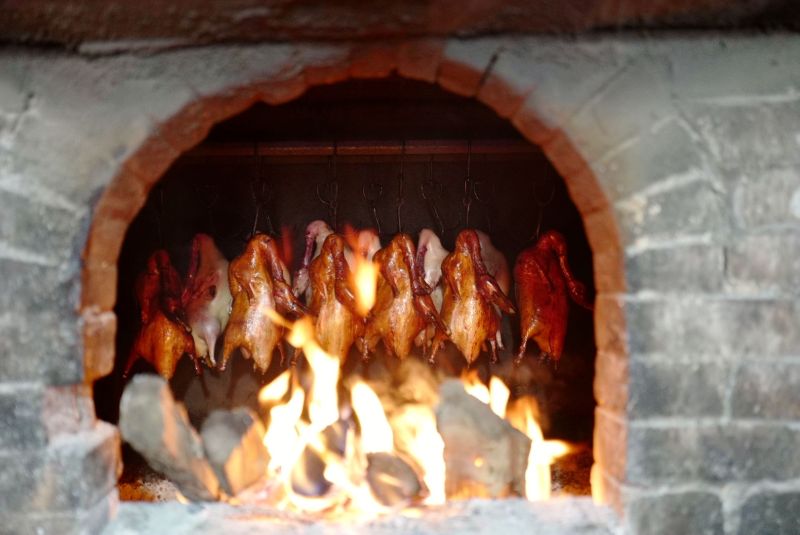
Image: Yipianchixin
Most visitors to Beijing head to one of the big chains or hotel restaurants for their fix of Peking duck. Good as many of these are, few match the charm or value of Zhang Li Qun’s 30-year-old family-run establishment, now managed by his daughter Zhang Xin. Li Qun’s ducks are roasted in an open wood-fired oven, its fame and fragrance drawing a steady stream of celebrities, dignitaries and other visitors down a hidden hutong laneway (ask locals to point you the right way).
Chen Mapo Tofu, Chengdu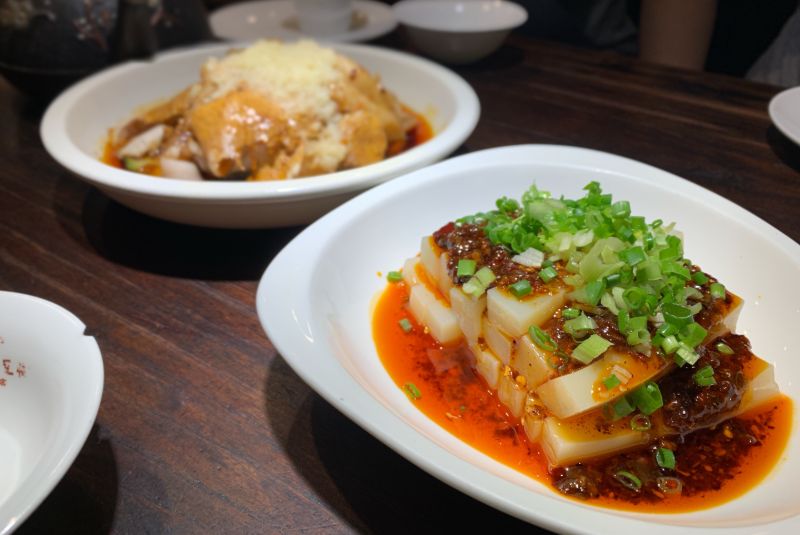
Legend has it that Chengdu’s most famous dish was created in the 19th-century by an elderly woman with a pockmarked face, which roughly translates to mapo tofu. And while there are many versions of this mouth-numbingly addictive medley of bean curd and ground meat swimming in a red sea of chilli, oil and Sichuan peppercorns, Chen claims to be the original. Dine at the LuoMaShi branch; ask discretely for directions.
102 House, Foshan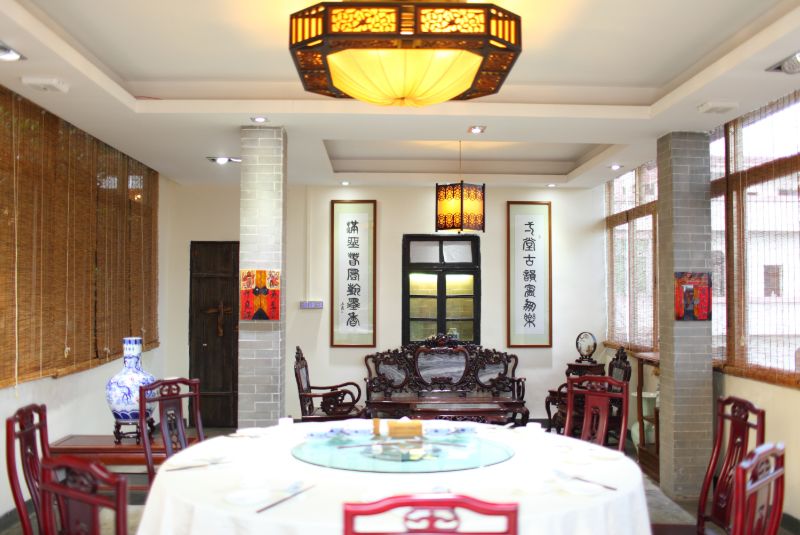
About an hour from Guangzhou, the capital of Cantonese cuisine, sits a two-storey bungalow that has become an essential gourmet destination. Here, chef-owner Xu Jingye and Yao Min have been researching and reviving ancient and lost recipes, in the process reshaping our understanding of this great cuisine. The presentation may be modern, but the dishes highly traditional and seasonal. In its 15 years of operation, the pair have built close relationships with growers, makers and traders, sustaining an important niche network
Longjing Manor, Hangzhou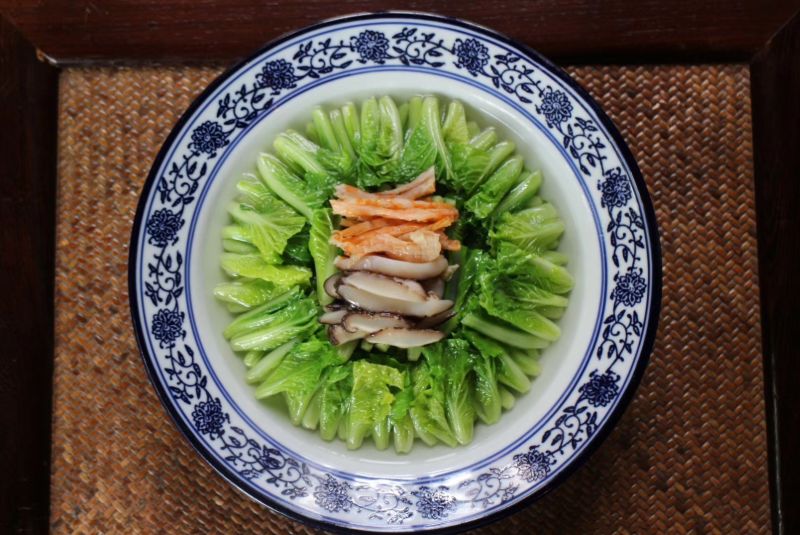
Image: Priscilla Young
The picturesque city of Hangzhou has inspired poets and scholars for centuries. It’s here, among tea plantations, that Dai Jianjun’s beautiful restaurant sits, a regional pioneer of farm-to-table dining, and upholder of one of China’s eight great cuisines (Zhejiang). The fare is rustic yet elevated, and priced accordingly. Dai meticulously records the provenance of nearly every ingredient he has bought over the years, which he will happily show to diners.
Fuchun (Yuyuan Road), Shanghai
If there is one Shanghainese dish that has conquered the world, it must be xiaolongbao: steaming soup-filled pork dumplings popularised by Taiwanese chain Din Tai Fung. When in Shanghai however, this 60-plus-year stalwart gets the votes of locals, expats and visitors alike. It serves three versions – pork, crab roe, and shrimp – as well as a range of simple home-style dishes.
Lihuayuan, Wuhan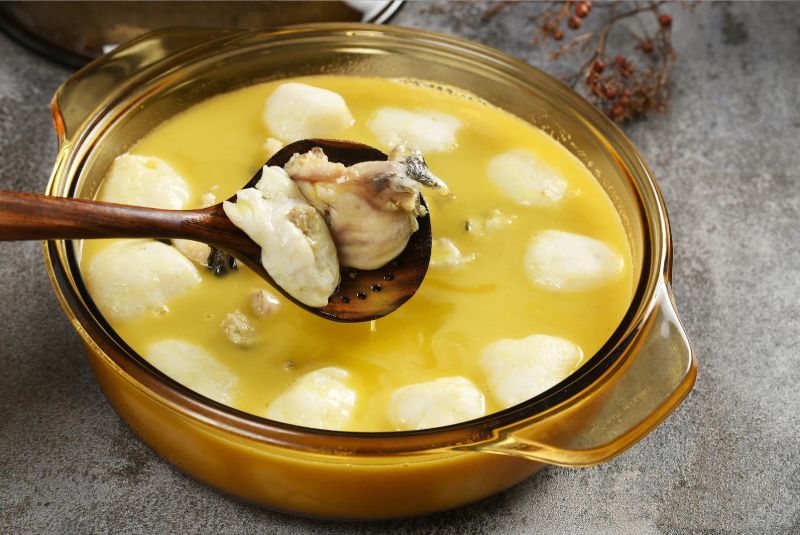
In nearly 30 years of operation, Lihuayuan has grown from small family restaurant to an 800-seat standard-bearer for Hubei cuisine, supporting an army of workers, farmers and suppliers along the way. At the height of the pandemic in Wuhan, the restaurant supplied more than 120,000 hot meals to frontline medical staff, among other initiatives, but with the coronavirus largely contained, it is turning to rebuilding livelihoods, and the city’s reputation, through good food.
HONG KONG
Australia Dairy Company, Hong Kong
Cha chaan tengs are humble cafés and teahouses offering quick, affordable and often hybridised East-meets-West food to the city’s workers and labourers. Among the most famous is Australia Dairy Company, which has been serving its signature scrambled eggs on toast for more than 50 years. Its silky-smooth steamed milk pudding is also a much-loved quick-and-easy snack.
Dignity Kitchen, Hong Kong 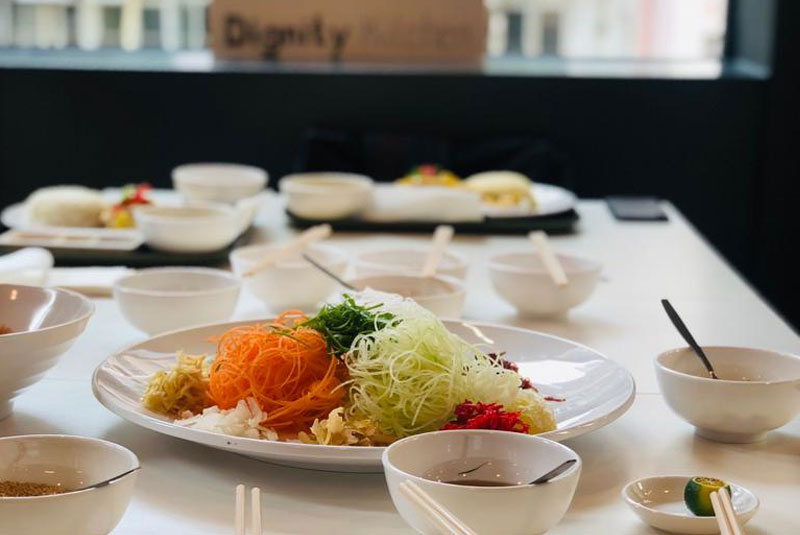
Founded in Singapore and recently expanded to a site in Hong Kong, Dignity Kitchen employs and trains people with disabilities in food preparation, cooking and service. Expect classic hawker dishes such as laksa, chicken rice and nasi lemak. The social enterprise pivoted to community service during the pandemic, providing warming food to homeless shelters and nursing homes, as well as food vouchers to minority groups. It has managed to retain all 100 of its employees with disabilities over the course of the pandemic, though has invested heavily to do so.
Kau Kee, Hong Kong
Beef brisket noodles are a staple in Hong Kong and this institution of more than 90 years draws huge lines around the block. The seating is tight and service comes without a smile, but the crowds are undeterred. Apart from the beef brisket noodles in clear broth, Kau Kee’s speciality is the curry beef brisket noodles, a spicy, thick and lip-smacking stew that will have you thinking about a return visit tomorrow. Be sure to order it with beef tendon.
Pei Ho Counterparts, Hong Kong
Chan Cheuk-ming, affectionately known as Ming Gor, or ‘older brother’ to his patrons across Hong Kong, has been serving the city for 25 years. He’s been helping the needy for almost as long, providing free rice boxes to the elderly, disabled and homeless in one of the city’s poorest neighbourhoods, Sham Shui Po. The food is simple, authentic and delicious. Anything involving roast duck will set your palate alight.
Roots, Hong Kong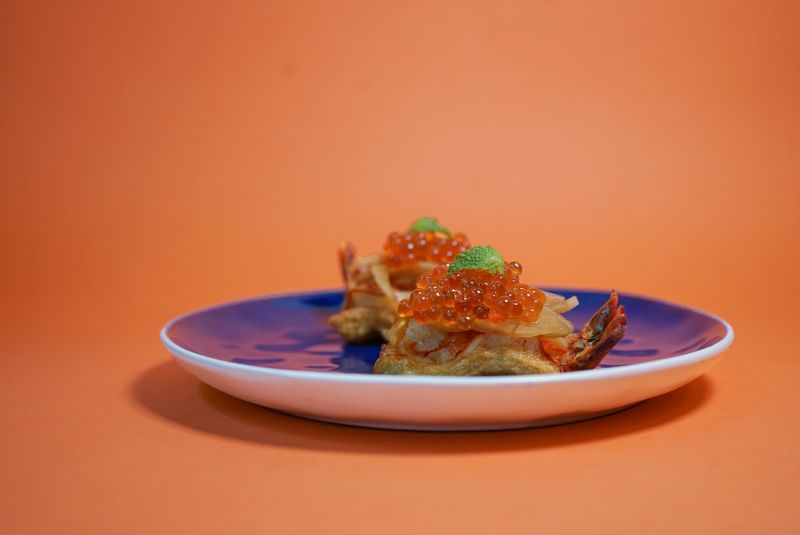
Stephanie Wong shifted from a job in corporate finance to chef and then owner of her own 20-seat bistro, which she opened in 2018. Wong turns out creative and comforting fare that draws from her Cantonese heritage and French training in dishes such as shrimp toast and her roasted French spring chicken with glutinous rice, using ingredients mostly sourced from local wet markets.
Yin Yang Coastal, Hong Kong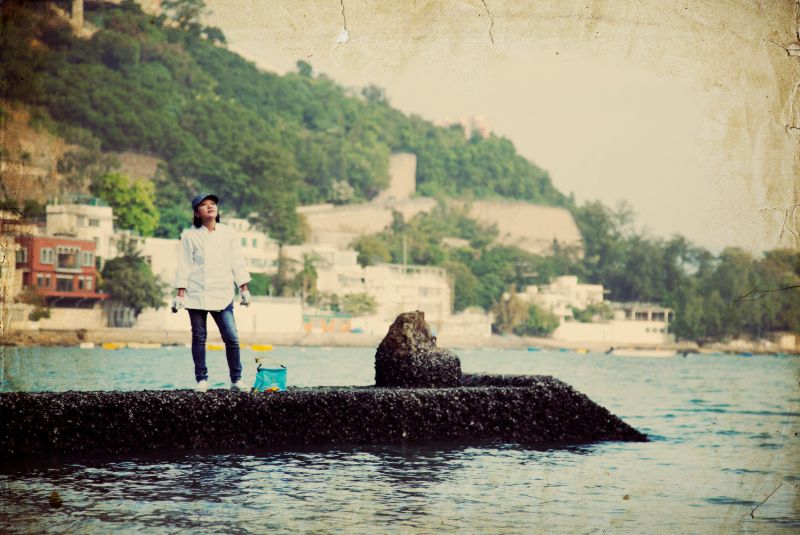
A beachfront house in the New Territories is the idyllic setting for Margaret Xu’s refined take on Hong Kong’s disappearing fishing village cuisine. Xu, an early proponent of farm-to-table cooking, sources vegetables from nearby plots and seafood from the South China Sea. Two of her signature dishes, the roast suckling pig and yellow earth chicken, are cooked in terracotta urns that she designed herself.
INDIA
Bengaluru Oota Company, Bangalore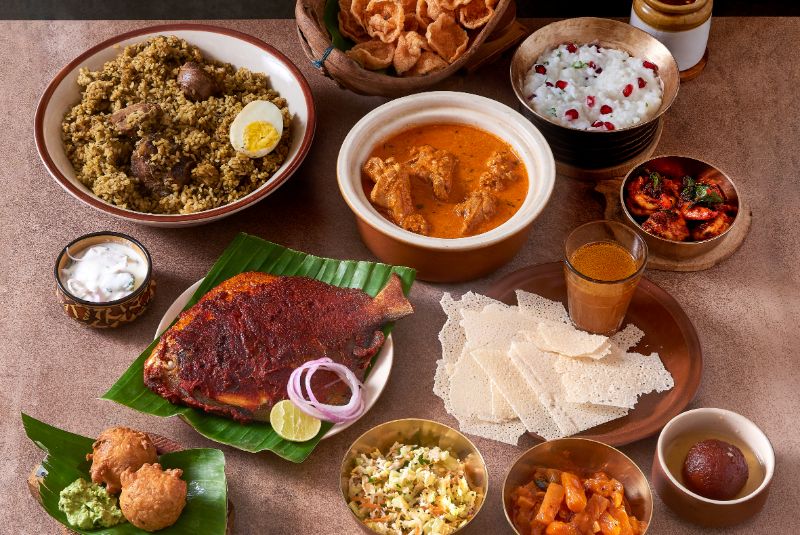
A family style restaurant run by women, Bengaluru Oota Company celebrates the respective cuisines of childhood friends and co-owners Divya Prabhakar and Vishal Shetty, both from Karnataka state. From Shetty’s side comes the seafood-rich coastal cuisine of Mangalore, with specials like crab curry and marwai ajadina, a clam dish. Meanwhile, Prabhakar brings Gowda cuisine, a style of cooking based on farming that produces delicious mutton curries and jaggery-based desserts.
Mum’s Kitchen, Goa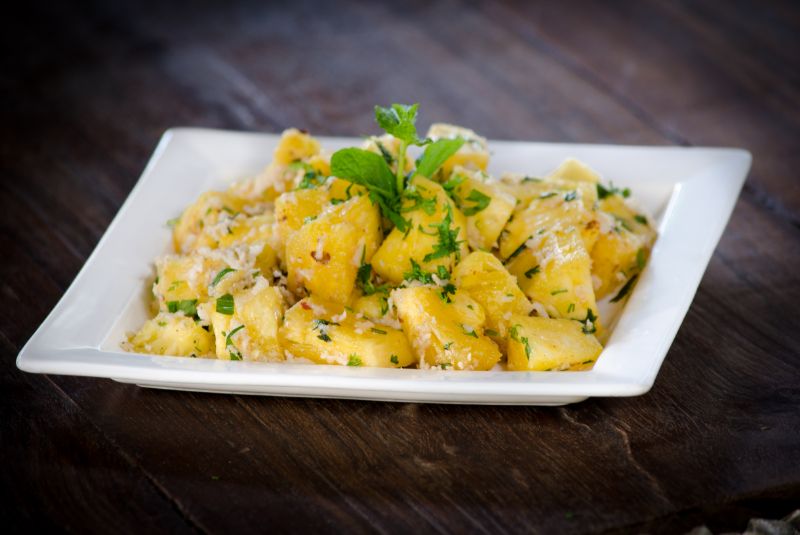
Female-owned Mum’s Kitchen is a friendly local restaurant close to Miramar beach, serving authentic Goan cuisine. Seafood is abundant, with everything from kingfish peri-peri to crab masala and lobster meat recheiado. What makes it special is that every recipe is handed down from the mothers of Goa, the keepers of its culinary secrets. True to its name, it has a breastfeeding lounge where busy mums can feed their babies in peace and comfort.
Ahdoo’s, Kashmir
Celebrating its 100th birthday in 2018, Ahdoo’s was the first restaurant in the Kashmir valley and hasn’t changed its menu since it opened – much to the locals’ delight. It is best known for its wazwan, a multi-course Kashmiri feast consisting of dishes comprising various parts of the sheep, such as methi, from intestines, and rogan josh, from the neck or shoulder. Set inside Hotel Ahdoo’s, it also has a bakery and café.
Shree Thaker Bhojanalay, Mumbai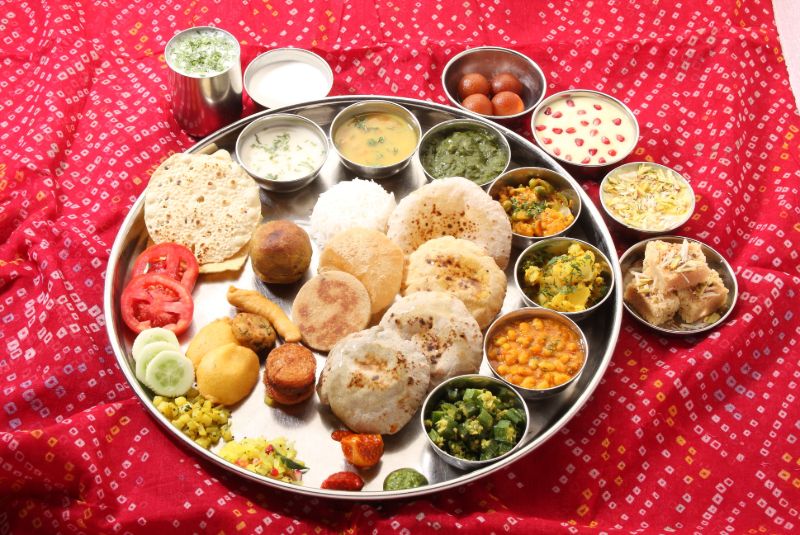
Widely regarded as Mumbai’s best thali restaurant, Shree Thaker has been serving its delicious vegetarian platters since 1945, previously under the name Thaker Club. It has upgraded from a no-frills eatery with simple stools to an air-conditioned restaurant but its unlimited thali concept remains, with the home-style cooking stronger than ever. In summer, look out for aamras, or mango pulp, while in a winter highlight is the uunhiyu, a traditional Gujarati vegetable curry.
Swati Snacks, Mumbai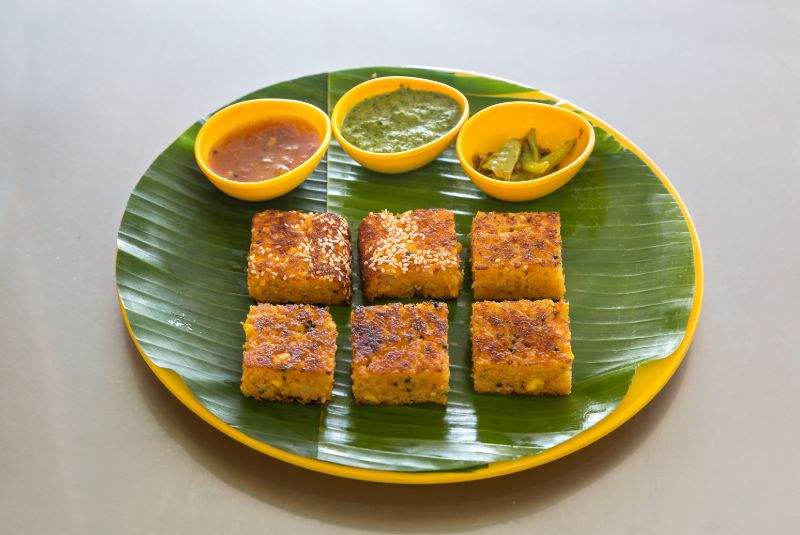
What began in 1963 as a tiny restaurant serving handmade chaats and hand-churned ice creams is now an iconic vegetarian spot with three branches and a loyal following. Run by the Jhaveri family, Swati presents an innovative menu that builds on traditional dishes, often inspired by street food or home cooking. It is famous for its iconic yellow plates, which serve as the backdrop for mung dal pancakes or masala roti with yoghurt curry.
Rustom’s, New Delhi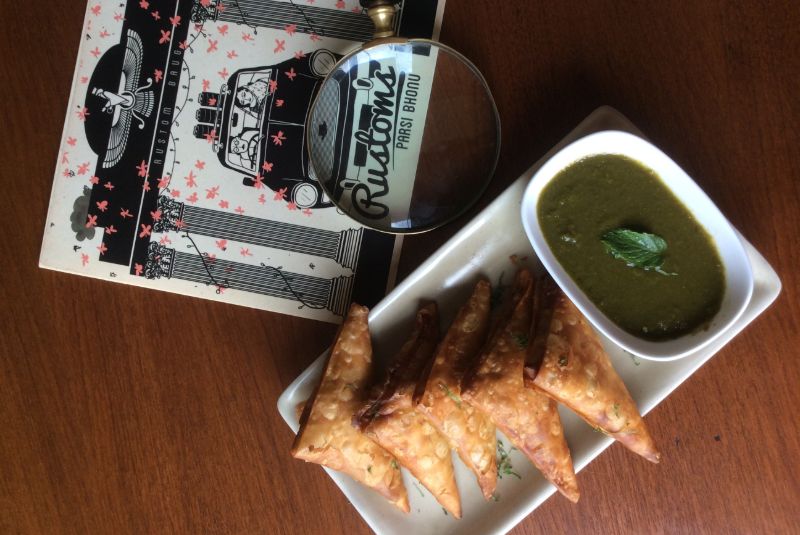
One of few Parsi restaurants in New Delhi, Rustom’s revisits old and forgotten favourites while giving diners a glimpse into a cosy, traditional Parsi home. Beyond popular dishes like dhansak and salli boti, Rustom’s focuses on lesser-known delights like chilli cheese toast, jam thumbprint cookies and mawa cakes. Eggs feature heavily too, whether scrambled in akoori with mutton boti, or in Parsi masala omelettes or crepes.
INDONESIA
Babi Guling Pande Egi, Bali
Unlike many popular babi guling (Balinese suckling pig) spots in Bali, Babi Guling Pande Egi is no tourist trap - its offerings are unusually affordable even by local standards. Secreted completely off the beaten-track, this hard-to-get-to eateryis nestled in the midst of a sprawling rice paddy field in Gianyar, making for one of the most bucolic settings to savour the flavourful freshly roasted pork, served Indonesian nasi campur-style(with rice).
KooD, Bali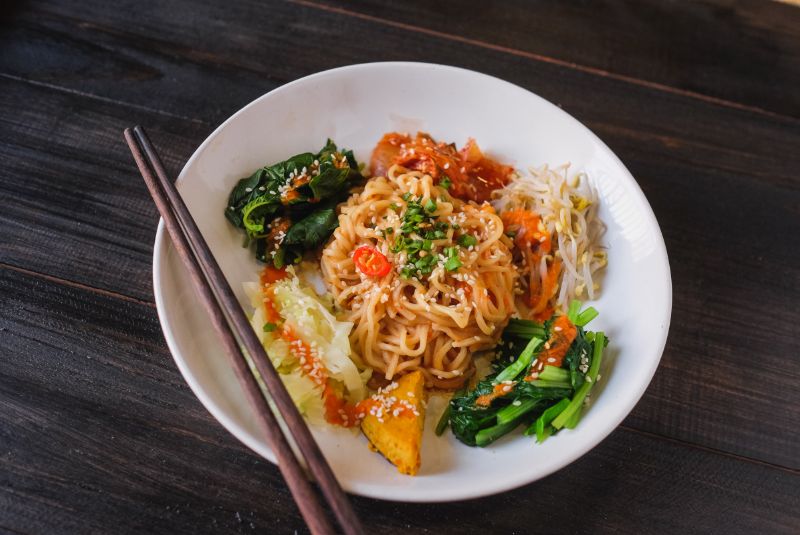
The moniker KooD is a shortened version of Kolaborasi Untuk Desa, which translates as ‘collaboration for the village’ and indeed, this plant-based co-operative canteen in Sanur, Bali, is a gift to its community. Apart from its budget price points – exquisite egg sandwiches using plant-based eggs go for IDR20k [$1.40] – all dishes are prepared with no oil and sugar and you get free-flow water and rosella tea. That’s not to mention the plastic-free bulk store, the library and (for a minimal upcharge) access to a co-working space.
Pagi Sore, Jakarta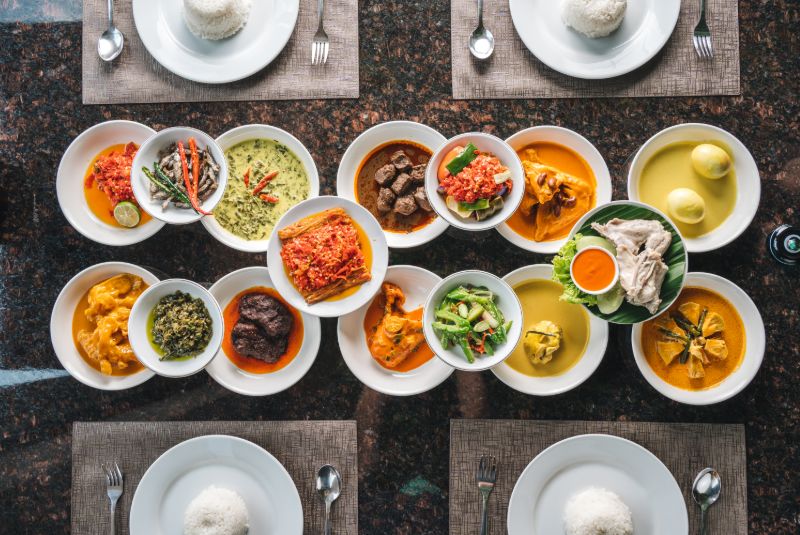
For authentic Minang cuisine in Jakarta, join the queue at Pagi Sore in Cipete, an offshoot of the South Sumatra flagship of the same name. Bathed in a soothing shade of warm wood, this clean and chic restaurant is universally renowned for its homey beef rendang but insiders also know to order the city’s most acclaimed ayam pop – skinless chicken deep-fried in oil served smothered in a silky coconut milk-based sauce alongside a chilli dip. It now has multiple branches from which to sample its excellent fare, and it runs a profit-sharing scheme for its employees, too.
Lupis Mbah Satinem, Yogyakarta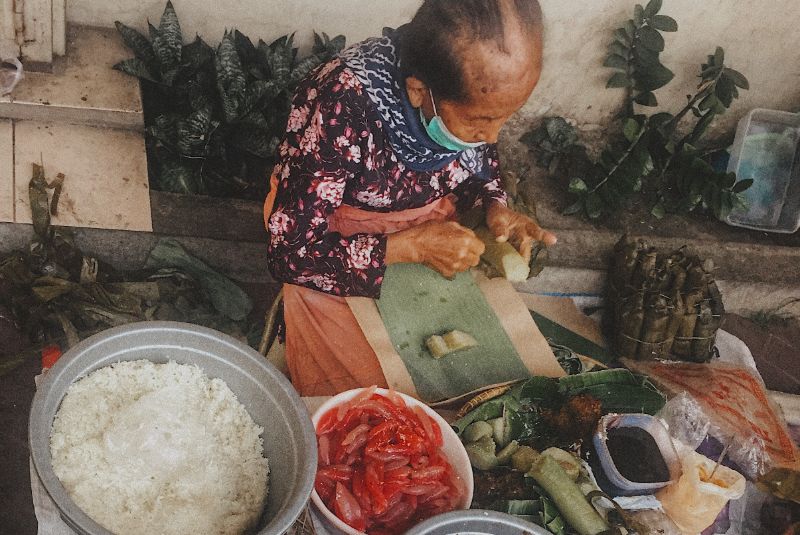
Image: Anne Diana Putri
This Javanese snack of sticky rice and shredded coconut drizzled with palm sugar and wrapped in a banana leaf, also known as jajan pasar, is a local breakfast delight in Yogyakarta. It shot to fame when the decades-old Lupis Mbah Satinem, led by the eponymous 80-year-old hawker Mbah Satinem herself, was featured in Netflix’s Street Food series. Satinem still serves the snack from a pavement near a local market; come before 9am to avoid disappointment.
JAPAN
Natsukashiya, Amami Ōshima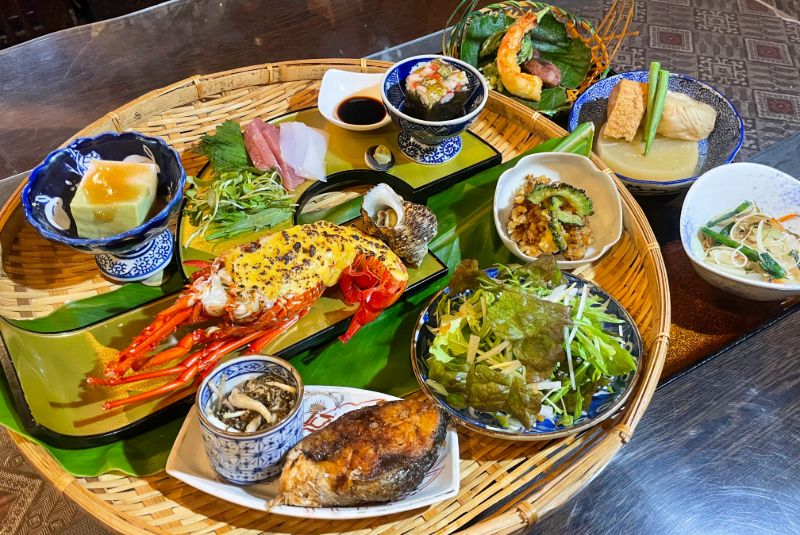
On retiring from her career as a schoolteacher, Egami Isako, aka ‘Anma’ (mother), made it her second-life’s mission to impart her knowledge of Amami Ōshima island food to a younger generation. A visit to Natsukashiya feels like a visit to a favourite auntie – the entrance is like that of a private home, with seating in individual rooms for each party. Expect a lot of bang for your buck: big portions of local dishes; fish and seafood galore; chicken, pork, goat and fantastic rice; all served in a row on a woven bamboo basket called a sambara, with the average meal ringing in at around ¥5,000 [$48].
Honke Owariya, Kyoto
Kyoto’s Honke Owariya has been charming guests since 1465, no less. The family-owned noodle joint is now run by 14th-generation daughter Ariko Inaoka, who oversees a kitchen known for sending out some of the best buckwheat soba in the world. A tight menu features the likes of signature soba noodles in broth and a five-tier soba set with toppings including seaweed, egg, daikon, shiitake mushrooms, wasabi and shrimp balls. Don’t expect a Tokyo outpost anytime soon: according to the owners, the water there means the dashi wouldn’t be of the same quality.
Pasania, Osaka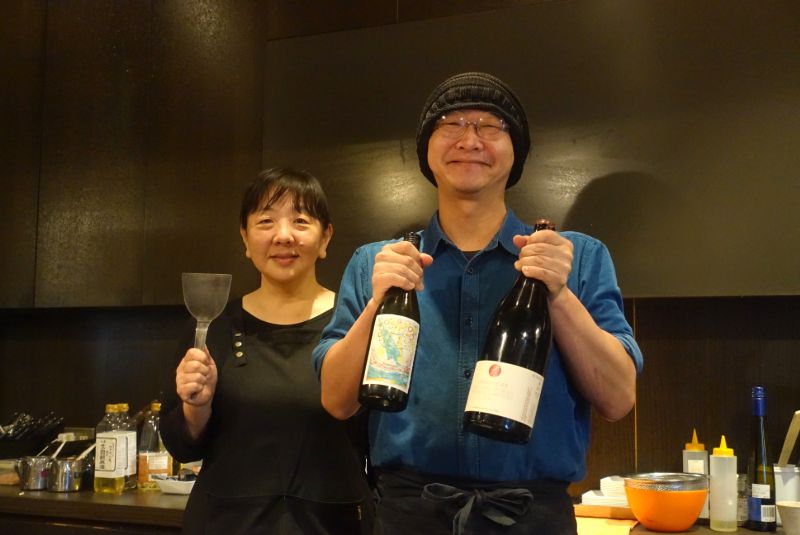
When devouring Pasania’s okonomiyaki – a pizza-like wheat flour and egg-based soul food – the insider tip is not to accompany it with the usual fizzy shochu or beer, but with natural red wine, whose acidity pairs beautifully with the sauce’s sweetness. Heading up this Osaka hot ticket is chef Yoshio Nakagawa, who uses only top-quality, carefully selected ingredients, and serves up the star dish as the final course in a short set menu. Warm-up acts might include baby squid cooked on the teppan grill, spicy potato and cauliflower potato and wagyu worth writing home about.
Eatrip, Tokyo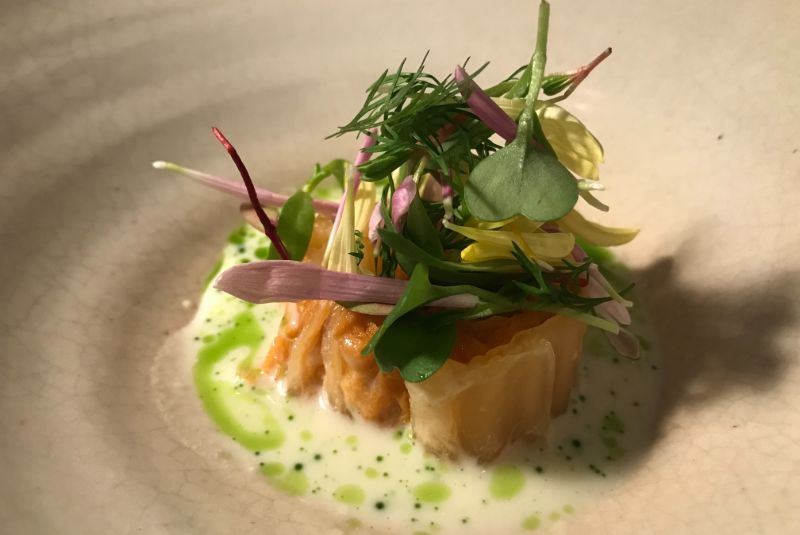
This cult restaurant is a breath of fresh air – all soft foliage and well-tended flowers in its outdoor dining area – amid Tokyo’s busy Harajuku shopping district. For both the aesthetic and the acclaimed food, we have Yuri Nomura to thank. The writer, broadcaster, shopkeeper, culinary teacher and restaurateur is a pioneer of creating long-lasting connections between growers and big-city folk and has been supplying food boxes of quality produce and ingredients from around Japan throughout the pandemic. Her 2010 documentary Eatrip also gives a good idea of what to expect on the – beautifully presented, always organic – plate.
Sincere Blue, Tokyo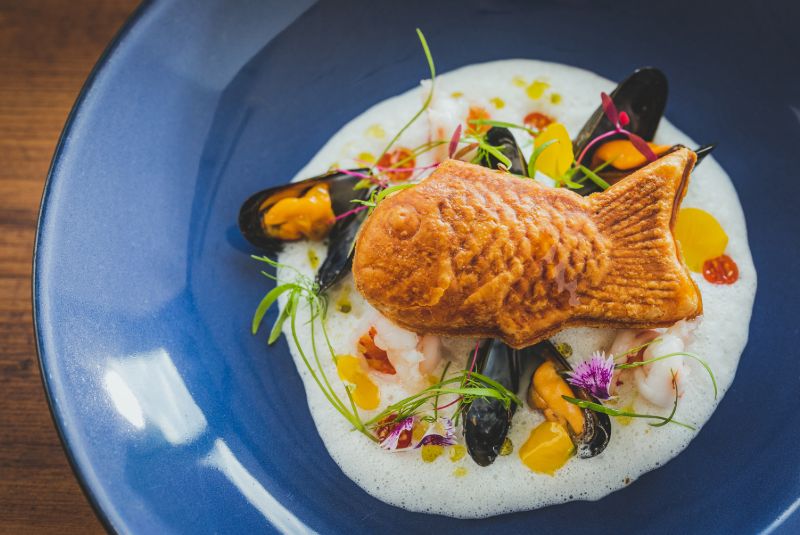
The sibling of Shibuya-based Michelin-starred Sincere, this buffet-style beauty in Harajuku was born out of a collaboration between Sincere’s owner, Shinsuke Ishii, and Chefs for the Blue, a network connecting some of Tokyo’s most highly regarded cooks with marine scientists, journalists, NGOs and sustainable seafood consultants. Ishii’s planet-friendly, strictly seasonal French-based cuisine always comes with a local spin: menu highlights include cuttlefish with cauliflower cream, sea bass taiyaki and seafood carpaccio, bringing a modern vitality to Japan’s age-old seafood culture.
Sushi Dai, Tokyo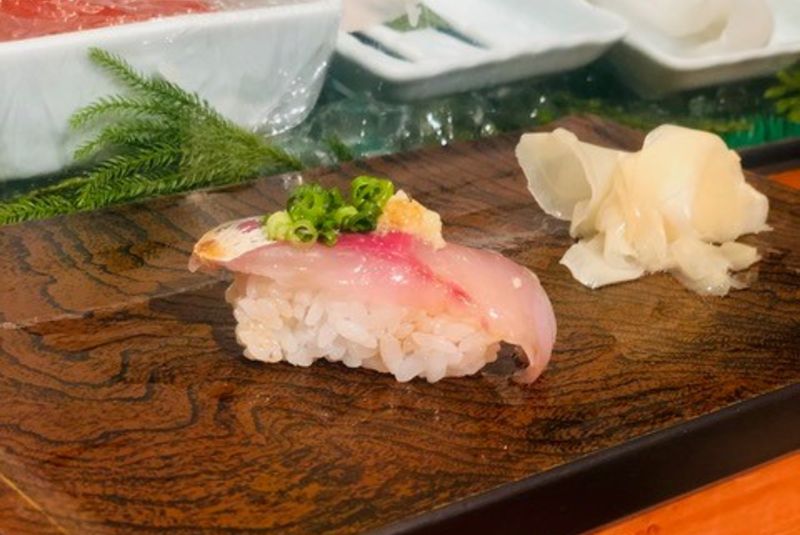
Image: Takanori Nakamura
One of the tiniest restaurants in Toyosu Fish Market, Sushi Dai has nevertheless found considerable fame. When it moved in 2018 from the crumbling Tsukiji Market, its customers moved with it. Ever-present during opening hours – 10.30am-4am the following morning – the long line outside is not just an indication of the value-for-money found within (¥4,800 [$44] for a 10-course omakase that would cost twice as much elsewhere in town) but also a reflection of ever-present chef Urushibara Satoshi’s work, the quality of which is in inverse proportion to the price. Head to Block 6 of the market and wear comfortable shoes – it’s worth the (two-to-five hour) wait.
LAOS
Tamarind, Luang Prabang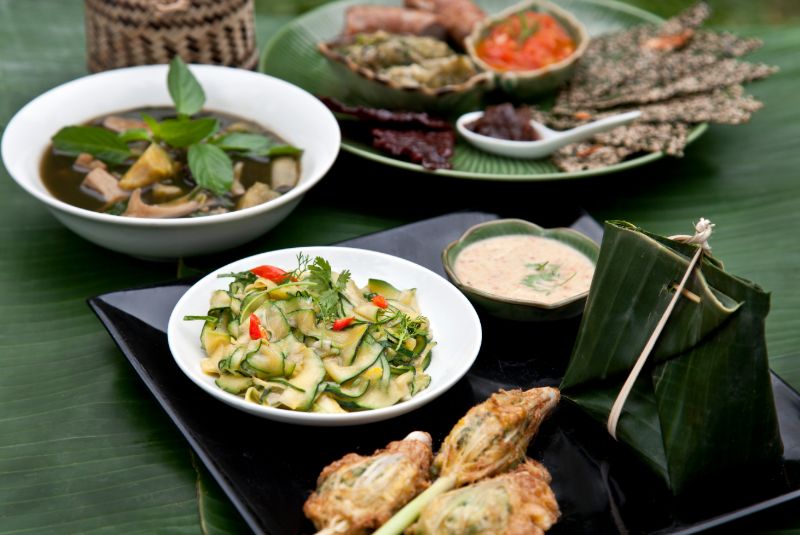
Husband-and-wife-team Joy Ngeuamboupha and Caroline Gaylard are a force of nature and their venture, Tamarind, one of the hottest tickets in Laos. Doubling as a community hub and cookery school, the menu is fuelled with super-fresh ingredients sourced from small-scale producers and suppliers. Dining here is a feel-good exercise on every level: the owners work hard to raise awareness not only of food-related issues but wider social ones, too. During a donor shortage, for example, they encouraged their staff to donate blood at the Lao Friends Hospital for Children.
Doi Ka Noi, Vientiane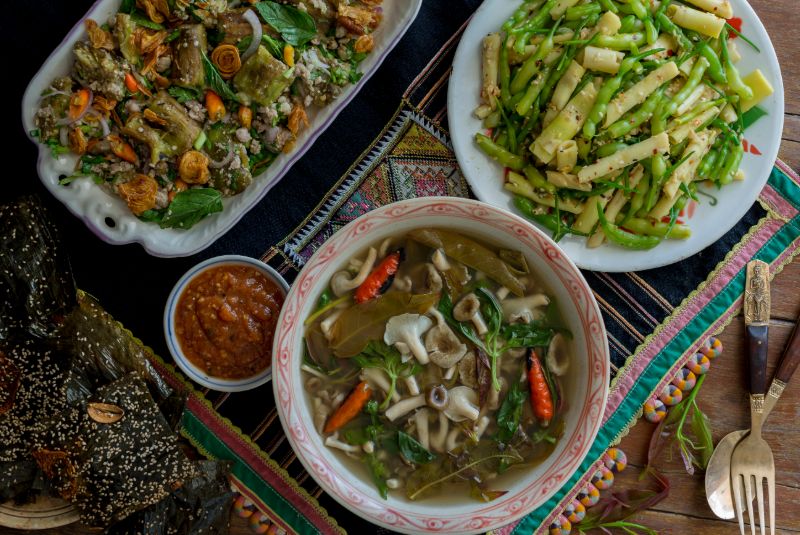
Chef Ponpailin ‘Noi’ Kaewduangdy’s restaurant doubles as a gallery, her husband’s vibrant photography gracing the walls. Having learnt to cook at her late grandmother’s side, Kaewduangdy’s dishes are a celebration of both matriarch and old-school native cuisine. The only Lao member of the Slow Food movement, her pantry is replenished every morning, with fresh picks from the market or her garden. A hit with locals and discerning visitors alike, Doi Ka Noi spells comfort and joy with every mouthful, be it pork stuffed with lemongrass or Luang Prabang river weed with tomato-chilli dip.
MACAU
Henri’s Galley, Macau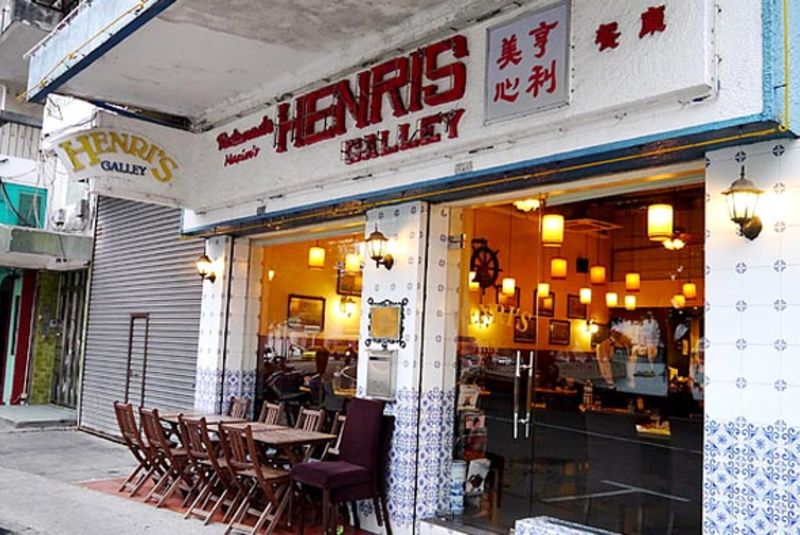
African chicken is arguably Macau’s most famous dish and Henri’s Galley has been its go-to proponent for 45 years. Think curry meets casserole, with chilli, cayenne pepper, garlic, paprika and peanuts, though there are as many variations as there are cooks. The nautically themed restaurant was founded by Henri Vong, a former chef with the merchant marines (hence the nautical name), and is now run by his son Raymond.
IFTM Educational Restaurant, Macau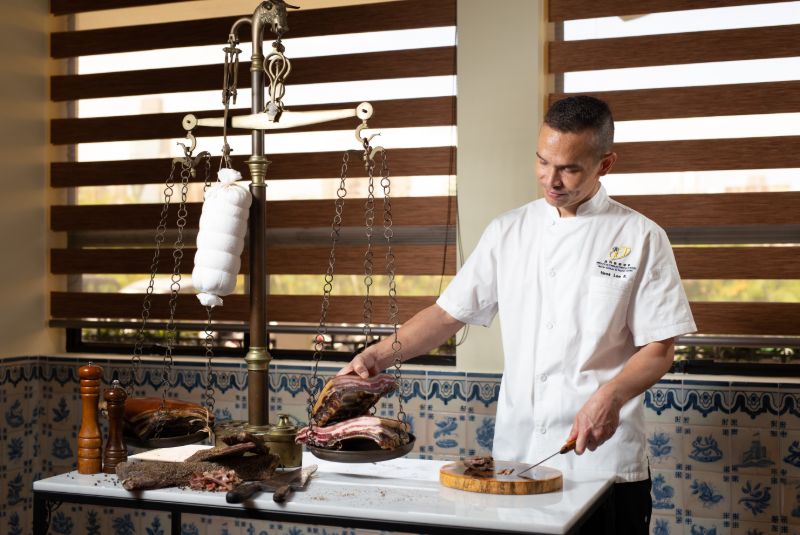
A school for future hoteliers, upholder of culinary traditions and champion of sustainable dining – the Macao Institute for Tourism Studies and its educational in-house restaurant set the standard for hospitality training in the region. The restaurant offers dishes that draw on the territory’s colonial past and Chinese heritage, including Portuguese seafood rice and Macanese meatloaf, alongside an exclusively Portuguese wine list. IFTM supports organic agriculture, grows herbs on-site and fertilises them using its own food waste.
La Famiglia, Macau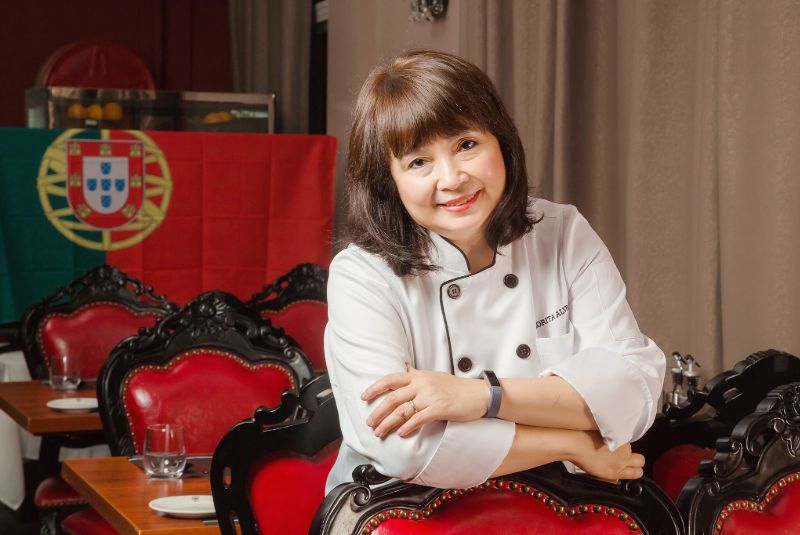
Florita Alves, a longstanding ambassador for Macanese cuisine, has transformed a struggling Italian trattoria (hence the name) into a culturally relevant success story. Situated in a terrace house in Taipa Village, it’s a refreshing change from Macau’s glitzy casino restaurants. A standout is minchi, an emblematic Macanese dish that includes minced beef or pork, cand rispy potatoes with a fried egg on top.
MALAYSIA
Artisan Handmade Bread, Ipoh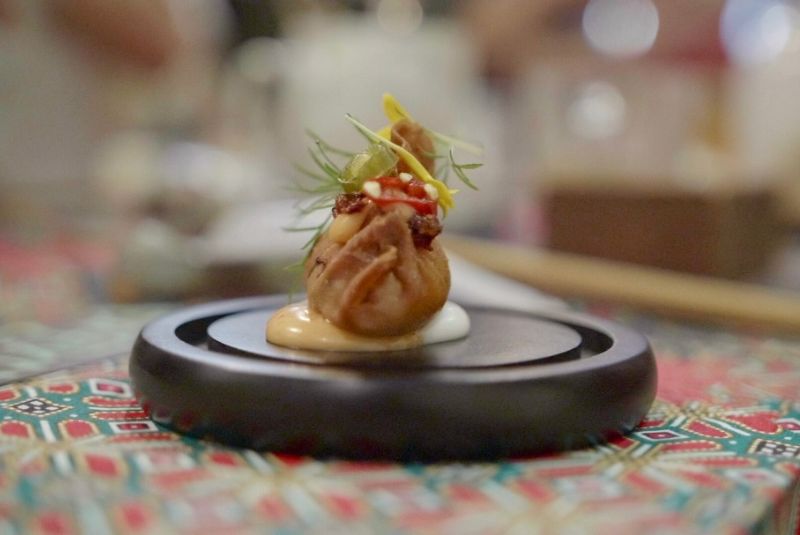
Set in an old shop house in Ipoh, Artisan Handmade Bread is both a bakery and a gastronomic cafe. Chef-owner Sam Lau parlays 16 years of Asian and European restaurant training to plug the gap for good breads and affordable set meals locally. His prix fixe menu includes risotto-style loh mai kai (steamed glutinous rice with chicken) served with chicken roulade and curry reduction. While the pandemic has restricted opening recently, the breads remain available to order online as the restaurant prepares for reopening, possibly in a new location.
Kedia Kopi Yee Fung, Kota Kinabalu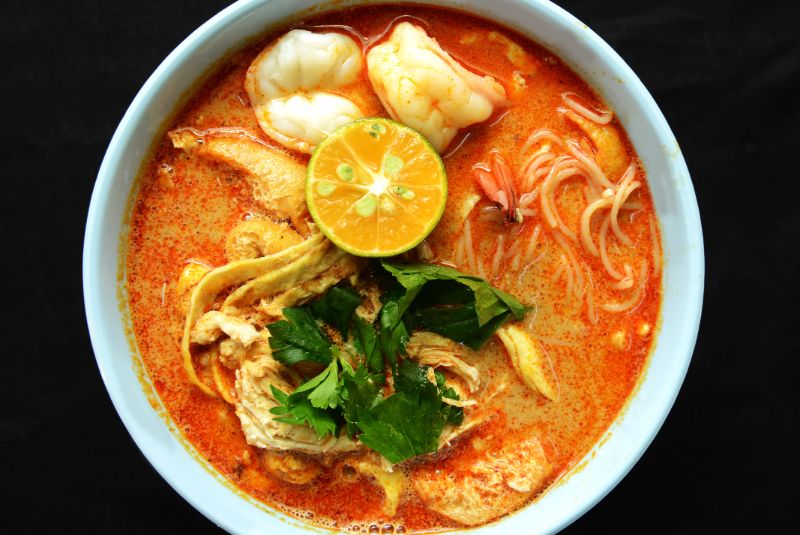
When in Kota Kinabalu, it’s essential to eat at Yee Fung. This super-casual diner run by the honourable Mr. Cheng is lauded for its sabah laksa, yellow noodles with shredded chicken, prawns and fried tofu in a mildly spicy broth finished with lime. But its ngiu chap (mixed beef noodles) is no afterthought: silky flat noodles with beef slices and offal in a heady beef broth. The eatery has done so well that Mr. Cheng went from renting a street stall to eventually owning the shophouse 20-something years later.
Bijan, Kuala Lumpur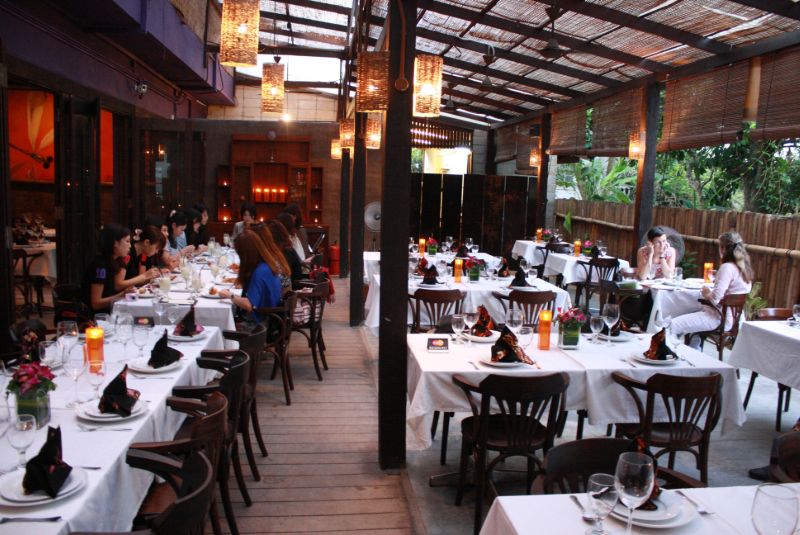
Founded by three women – Yuen Sze To, Lissa Yeoh and Way Cheng Yeoh – back in 2003, Bijan (meaning ‘sesame’ in Malay) was once touted by local media as ‘Kuala Lumpur’s culinary gift to the people’ and for good reason. It serves what many claim to be the best rendang in Malaysia - a dark and dry rendang tok featuring dry-fried coconut flesh with a coconut-cream oomph. For the full Bijan experience, pair it with a glass of wine. The trio of owners have also been leading campaigns to help frontline workers and those in need during the pandemic.
Siam Road Char Koay Teow, Penang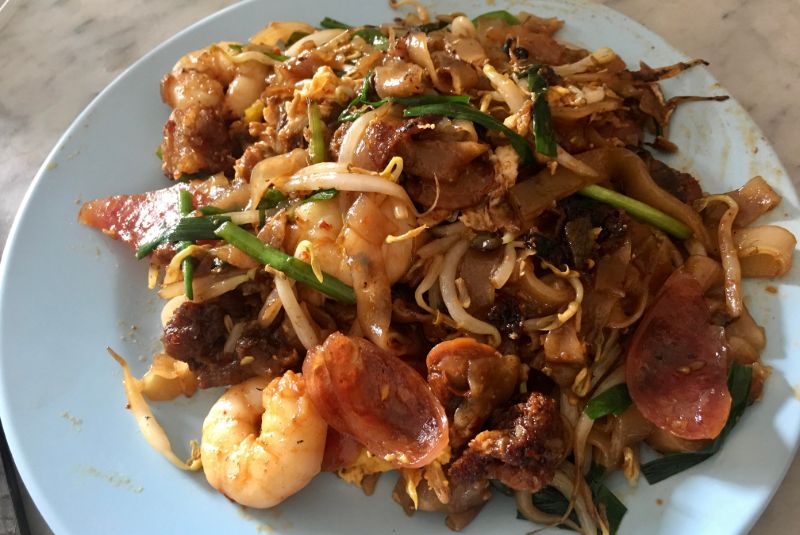
Image: Nicholas Ng
Amidst the sea of pushcart hawkers that dot Penang, Siam Road Char Koay Teow reigns as the undisputed king of char koay teow. Operated by 79-year-old Tan Chooi Hong, aka Uncle Tan, who has been perfecting his craft over a fire-licked, blazing charcoal wok for 60 years, this is home to humble plates of flat rice noodles deftly stir-fried with bean sprouts, eggs, cockles, Chinese sausages and shrimps. Long placed on the pedestal as the country’s best, the line of fans is testament to its enduring quality.
MYANMAR
Rangoon Tea House, Yangon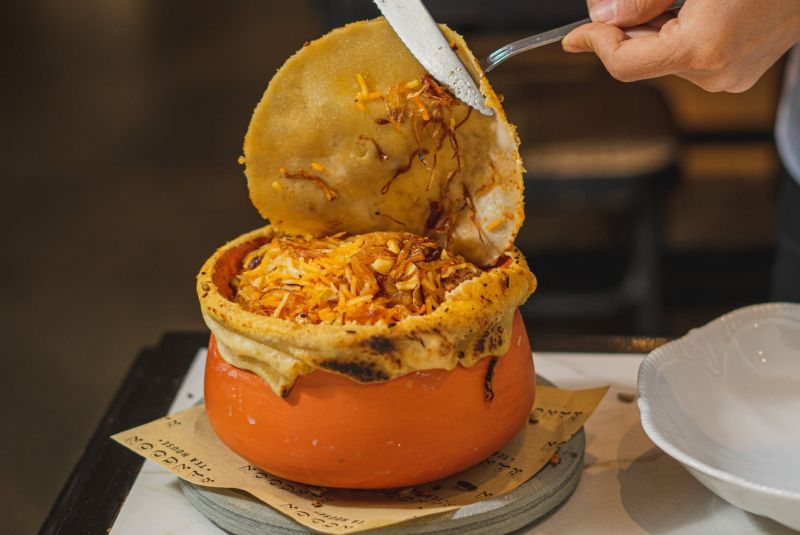
Founded in 2014 by Htet Myet Oo, who had returned to his native country after two decades away, Rangoon Tea House is part restaurant, part social club, reflecting the tea house’s central role at the heart of Burmese community. In a bright, airy, modern and spacious room with a high ceiling, it serves delicious noodles and soups such as four fish mohinga broth, as well as jackfruit and cashew biryani and village butterfish curry.
Shan Kitchen, Yangon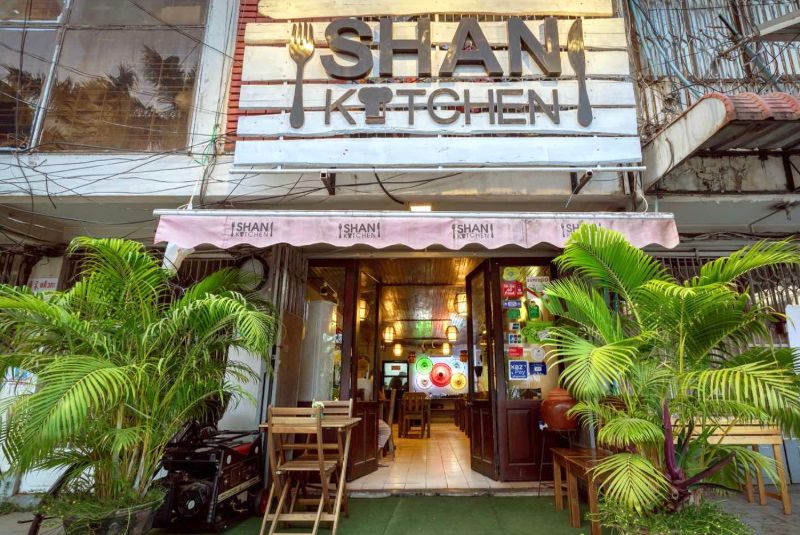
A small, cosy spot specialising in authentic Shan cuisine from eastern Myanmar, Shan Kitchen serves Shan-style sour pork, steamed fish with lime and garlic, and plenty of noodles and soups. Upstairs, the restaurant offers a small taste of the Shan cultural experience with traditional floor seating, while downstairs has a more modern seating arrangement. Vegetarians are well catered for, with options like tofu noodles and fried rice with soybeans.
Shwe Sa Bwe, Yangon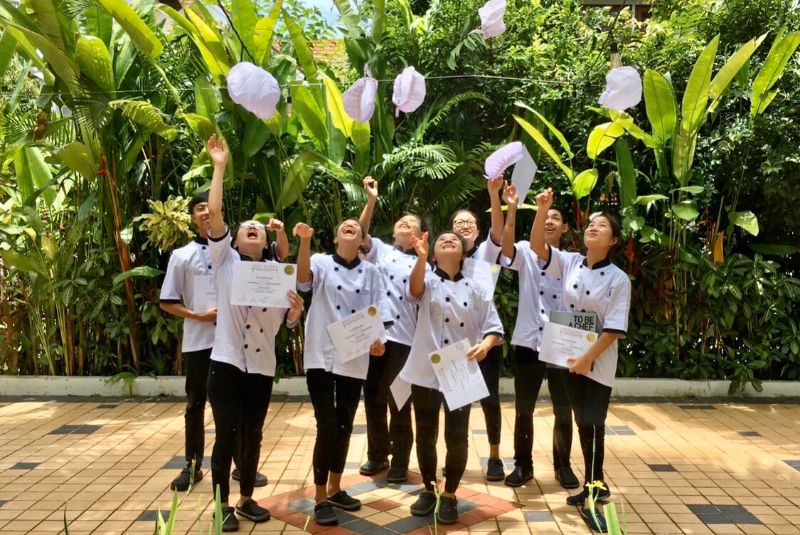
A restaurant and culinary school combined, Shwe Sa Bwe provides free-of-charge cooking lessons to students chosen from monasteries and orphanages. Diners here are taken care of by the students, under close supervision. Lunch is casual and bistro-style with dishes such as seafood chowder served in a bread bowl, while fine dining dinners include a tasting menu inspired by Filipino-Dutch chef and teacher Davy Eek’s travels across South East Asia.
NEPAL
Newa Momo Nepal, Kathmandu
Regarded by many as the best place for momos in Kathmandu, Newa is a family-run business serving a range of vegetarian and non-vegetarian dumplings as well as more substantial dishes in a homely setting with warm hospitality. It also offers cookery classes for those hoping to recreate these East and Southeast Asian steamed delights at home. Try the mushroom and the cheese versions.
Tukche Thakali Kitchen, Kathmandu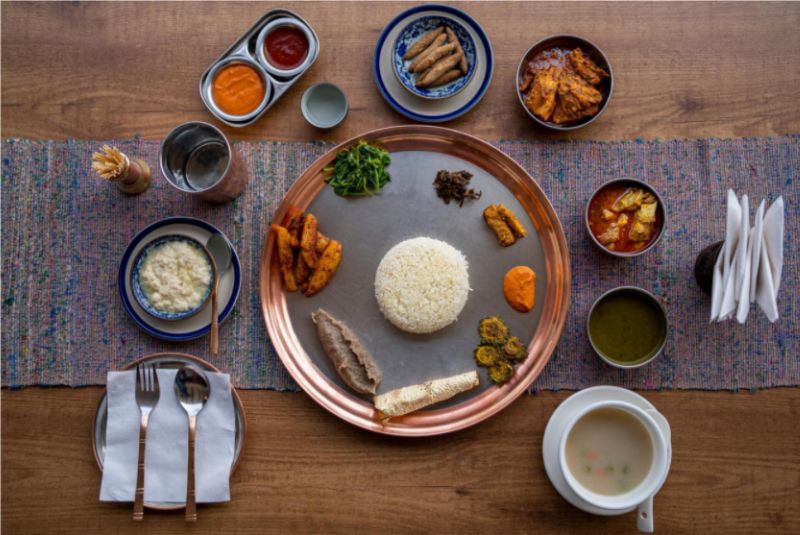
Serving Thakali cuisine from the Mustang district of Nepal, this elegant restaurant in Kathmandu uses local produce as well as ingredients from Tukche village in northern Nepal for added authenticity. There are à la carte and set menu options, including a thali meal of dal-bhaat, which contains lentil soup, aloo, and spinach saag. The family-run restaurant also serves delicious serves chicken, mutton or vegetable momos.
PAKISTAN
N’ecos, Karachi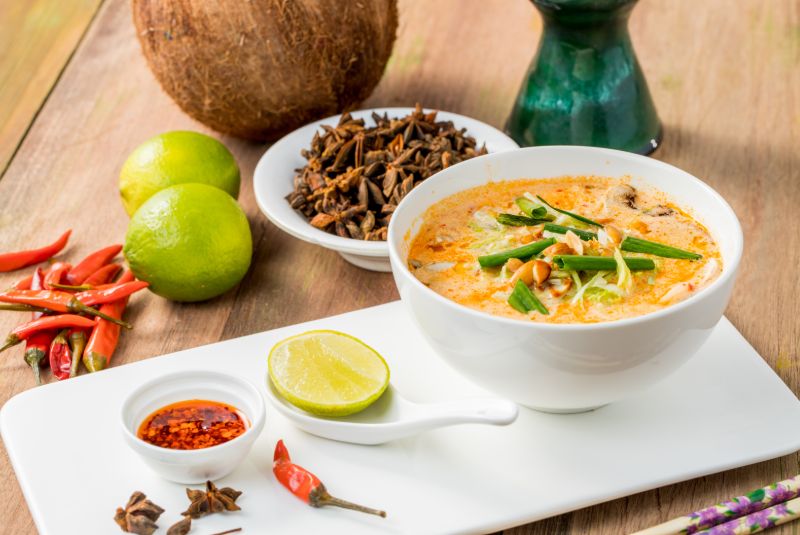
A hugely popular restaurant and natural and organic store in Karachi, N’ecos is owned by Nilofer Saeed, who ran hit restaurant Copper Kettle and has long been ahead of Karachi’s burgeoning health food movement. Her café caters well to vegans, with cauliflower fritters, mini aubergine pizzas and spicy veggie noodles, while the bakery and deli sell everything from homemade gluten-free bread and cakes to Neco’s own fruit jams and nut butters.
Waris Nihari, Lahore
Focusing on one dish and doing it exceptionally well, Waris serves Pakistani-style nihari, a spice-rich stew consisting of slow-cooked meats and ghee, garnished with chillies, lemon and ginger and served with giant roti breads. Located within a bustling bazaar, it’s a no-frills space with bare metal tables and it’s all about the star of the show: the nihari. Try the chicken, beef or mutton.
PHILIPPINES
Farmer’s Daughter, Baguio 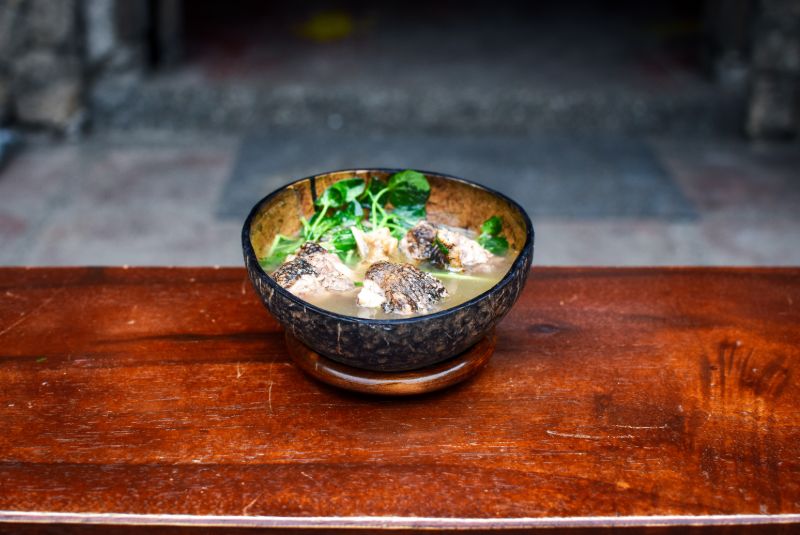
At the gateway to the Cordillera mountain ranges in the city of Baguio sits Farmer’s Daughter, a rustic eatery that pays tribute to the women (all born to farmers) in nurse-turned-restaurateur Pil-od Acop Ano’s life. Carrying the torch for the cuisines of indigenous ethnic groups and the high-altitude Cordillera region, Pil-od practises kinuday – a traditional way of smoking and preserving meats – and offers indigenous dishes like pinikpikan (a soup created from slaughtering and cooking chicken with certain highland techniques) and dinakdakan (grilled pig face) to hungry locals and curious visitors alike.
Earth Kitchen, Manila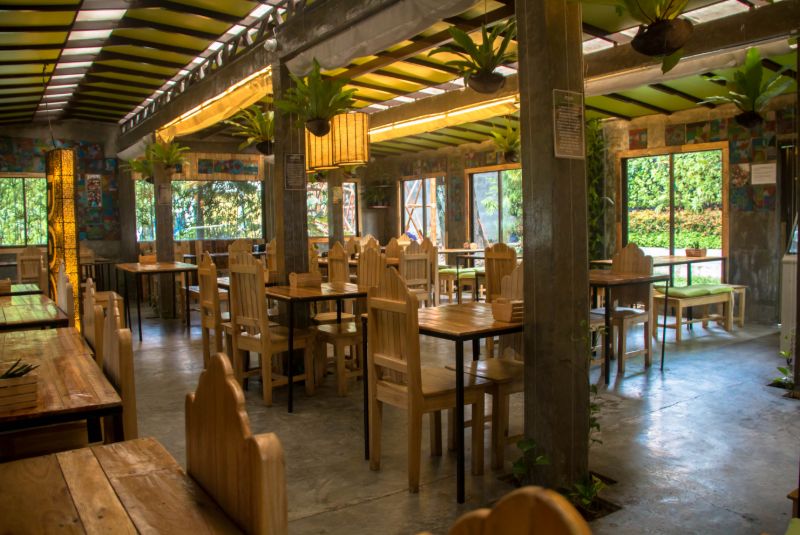
At Earth Kitchen, a farm-to-fork organic restaurant in Manila’s Quezon City, founder Melissa Yeung-Yap and her chef-partners are deeply mindful about what they serve: only wholesome produce and ingredients free of GMO, chemicals, synthetic fertilizers, pesticides and artificial flavourings make the cut. Singular in their intent to support local farmers, fishers and indigenous communities – as well as those most in peril during the pandemic – the team designs globally inspired dishes to showcase the Filipino terroir and ingredients: a ceviche, for instance, struts its stuff with local tuna, Spanish-style mackerel, seaweed and home-grown vegetables.
Hapag, Manila
Led by a trio of ambitious young chefs – Thirdy Dolatre, Kevin Navoa and Kevin Villarica – who were childhood friends, Hapag presents an experimental tasting menu that explores the diversity and complexity of Filipino cuisine using only locally sourced ingredients. Its deconstructed kare-kare, for instance, arrives as oxtail shreds sauteed in a fermented fish sauce condiment alongside fried vegetables, prompting some to tout this as the Philippines’ next Toyo Eatery. During the country’s prolonged lockdown, its staff meals were reinvented as the Hapag Family Meal for takeouts.
Bale Dutung, Pampanga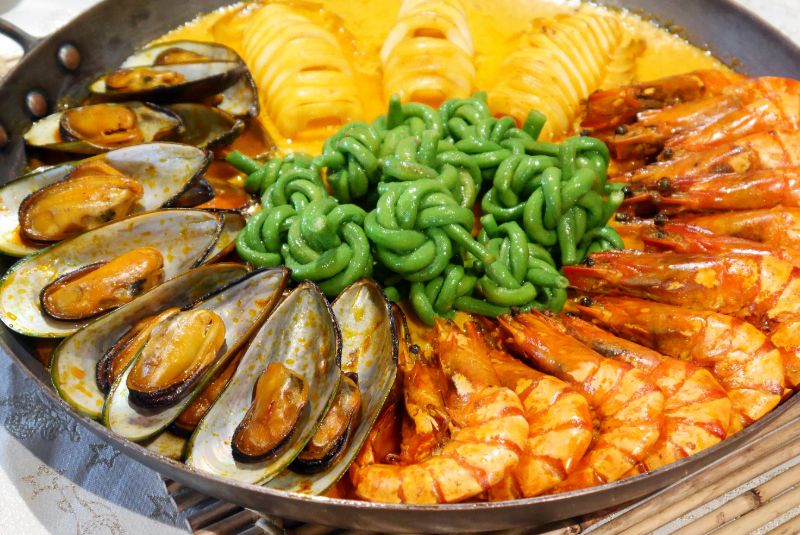
Reservations are a must at Bale Dutung, a by-appointment-only private diner in the Pampanga home of acclaimed Filipino artist, restaurateur and food writer Claude Tayag and his wife Mary Ann. Serving traditional Filipino food with a focus on the produce of the area, the eatery offers a choice of three substantial degustation menus: Pampango, Lechon (suckling pig) and ‘Anthony Bourdain’, the latter in honour of the late American chef and TV presenter who featured Bale Dutung in his No Reservations series in 2008.
SINGAPORE
Botanico at The Garage, Singapore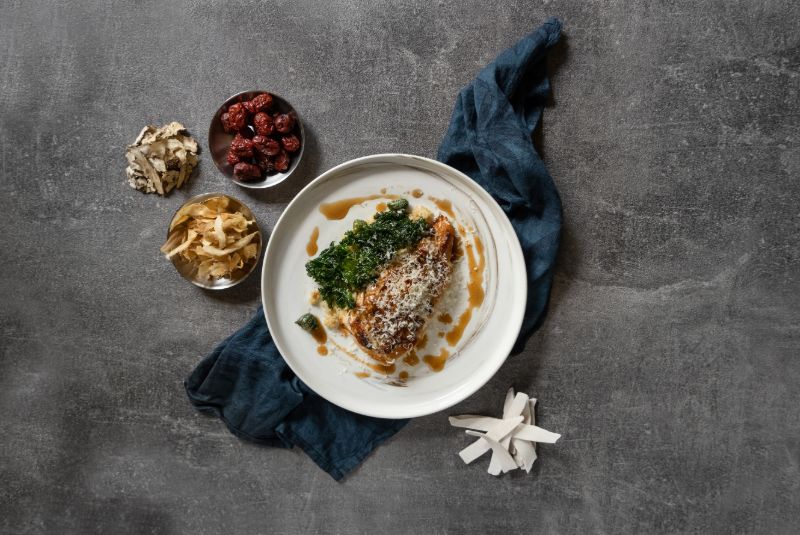
Hot on the heels of her local win as Rising Chef of the Year, Sujatha Asokan, head chef of Botanico, headed off to Spain to stage at fabled 50 Best restaurant Mugaritz and then ate her way through Europe. Invigorated, she returned to update the restaurant’s modern European menu with a renewed focus on her Chinese-Indian roots and Southeast Asian locale. A dish of winged bean salad with chickpea tofu and lashings of fried anchovies in a tangy belacan-based dressing is proof of her vibrant talent.
Jin Ji Teochew Braised Duck & Kway Chap, Singapore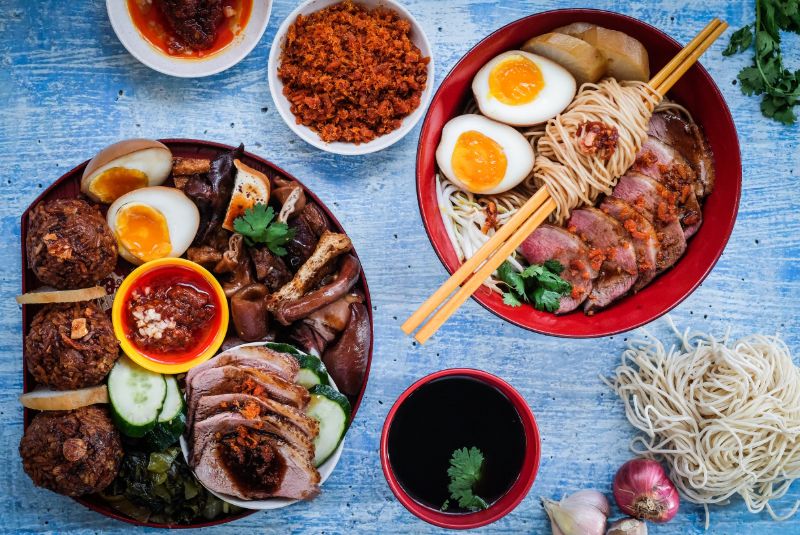
Melvin Chew, second-generation owner of Jin Ji, a 38-year-old stall specialising in kway chap (Teochew-style braised pig’s offal served alongside rice noodle soup), rose to local prominence when he founded ‘Hawkers United - Dabao 2020’, a Facebook initiative to help street food vendors promote food delivery during the pandemic. He enlisted close to 300,000 members and created further platforms, all while continuing to dole out local-style nose-to-tail hawker fare from his cramped but ever-popular stall in Singapore’s Chinatown.
Keng Eng Kee, Singapore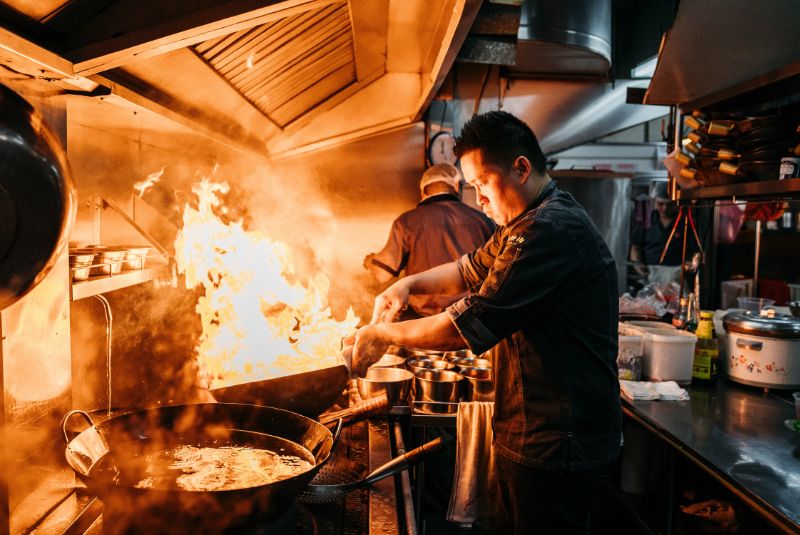
This tze char (food stall serving stir-fries) institution has been dishing out wok-fuelled local favourites like coffee pork ribs for five decades, the last 19 years of which from an airy coffee shop in Singapore’s Alexandra Village. Operated by third generation owners, Paul Liew oversees the floor while younger brother Wayne works the wok. Even during the city’s partial lockdown, the brothers led the charge in feeding local healthcare workers while diligently selling takeouts.
Mr & Mrs Mohgan’s Super Crispy Roti Prata, Singapore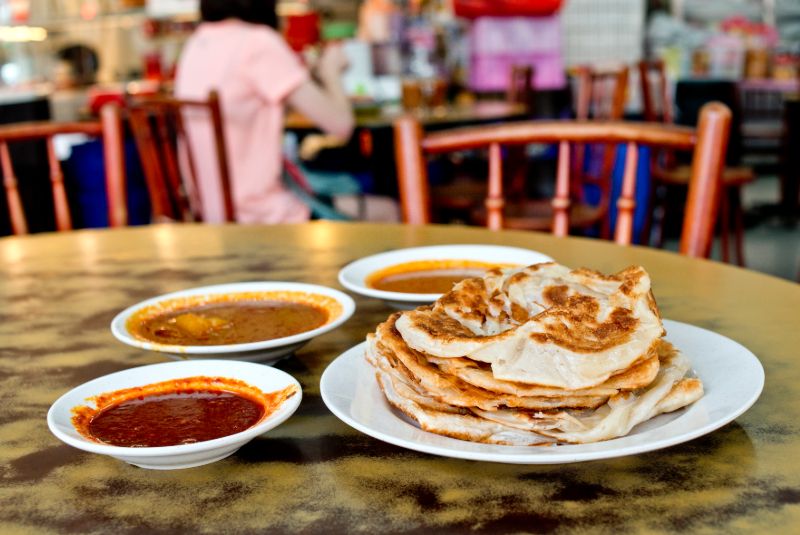
Image: Alex Ang
Mr & Mrs Mohgan’s Super Crispy Roti Prata has achieved somewhat of a cult status in Singapore - their Indian flatbreads are crisp-on-the-outside and fluffy-inside, a mastery Mr Mohgan has honed from flipping hundreds of pratas daily since 1991. Based in Joo Chiat Road since 2018, the couple first opened their eponymously named stall at Crane Road in 2011, swiftly building a fanbase as much for their pratas as for their hearty fish and mutton curry dips and sambal (chilli paste). Embrace standing in line as part of the experience.
Naked Finn, Singapore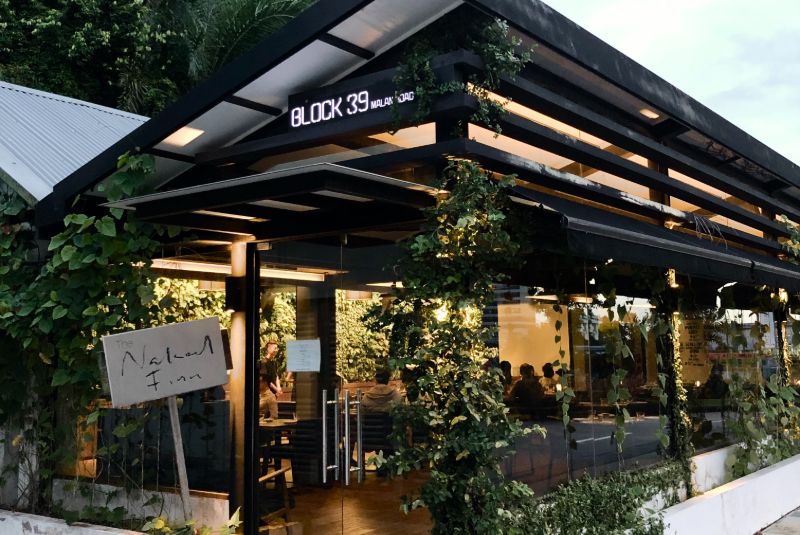
Mindfully sourced seafood, mostly wild-caught and procured from small fisheries, is the bill of fare at Naked Finn, a purveyor of sustainable seafood at the city’s Gillman Barracks. Owner Tan Ken Loon is focused on educating customers to experiment with non-mainstream species with an eye on the long-term health of the oceans. Meanwhile executive chef Kek Wan Fong keep the menu streamlined and the cooking simple, preferring to let the seafood itself bask in the spotlight: the sword razor clams, for instance, are blanched and served with a drizzle of fish sauce and shallot oil.
Restaurant Kin, Singapore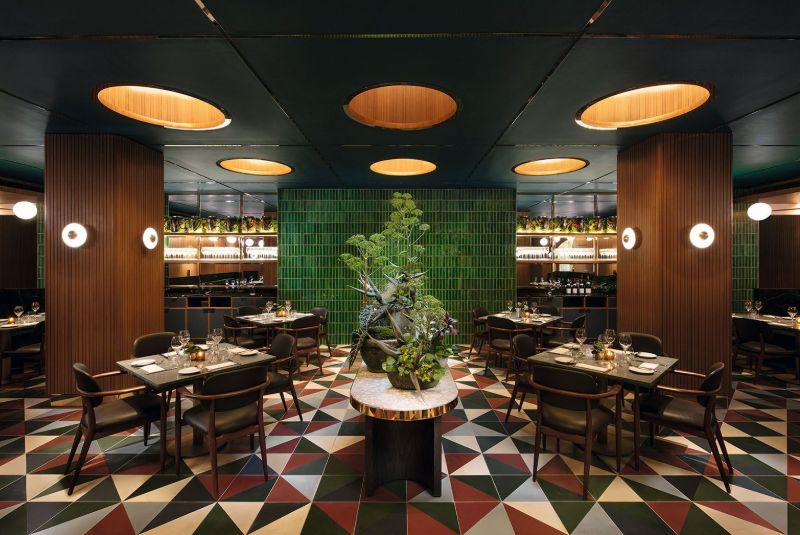
No one resurrects Singapore’s forgotten recipes like Damian D’Silva. The peerless Peranakan-Eurasian executive chef of Restaurant Kin insists on executing heritage recipes – like aberjaw, a Eurasian pork rib stew with fermented beans and bottle gourd – using only traditional cooking techniques. Quarantined migrant workers in the Lion City got a rare taste of the Masterchef judge’s cooking during the Circuit Breaker, when he participated in the Straits Clan Community Kitchen project to help feed those most in need.
SOUTH KOREA
Nangpoonbopsang, Jeju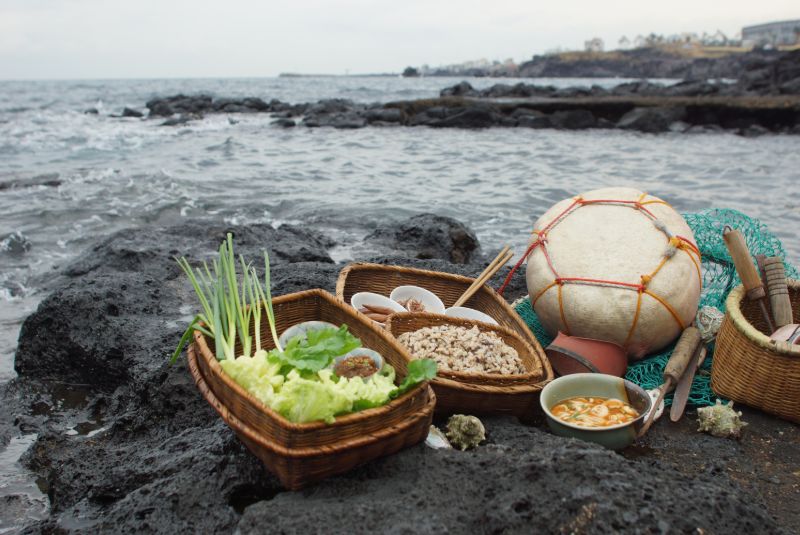
When eating on Jeju island, seafood reigns supreme – and has done for centuries. Chef Kim Ji-soon, at the helm in the Nangpoonbopsang kitchen, has been selected as the island’s local food master and culinary educator, so you know you’re in good hands here. Almost all of the ingredients used in his flavour-packed traditional dishes come from the island itself, from succulent pork to red pepper powder, bringing true local flavour to every plate. After your multi-course meal, head upstairs, where cookies and tea will be sure you leave with a big smile on your face.
Base is Nice, Seoul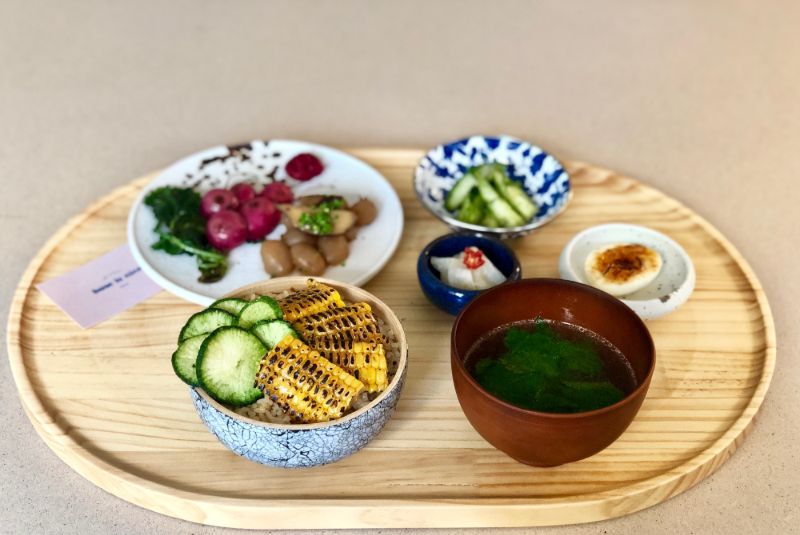
Located in the Korean capital’s hip Mapo District, chef Jang Jin-a rules the roost at this expectation-busting diner, sending out dishes that look as beautiful as they taste. With a background in restaurant consultancy and food styling, her creations are as refined as the attractive, airy dining room. Jin-a’s ethos is one of consciously upping people’s appreciation of a vegetable-centred diet – though carnivores will be able to find a few expertly prepared meaty offerings on the menu, too.
Geumdwaeji Sikdang, Seoul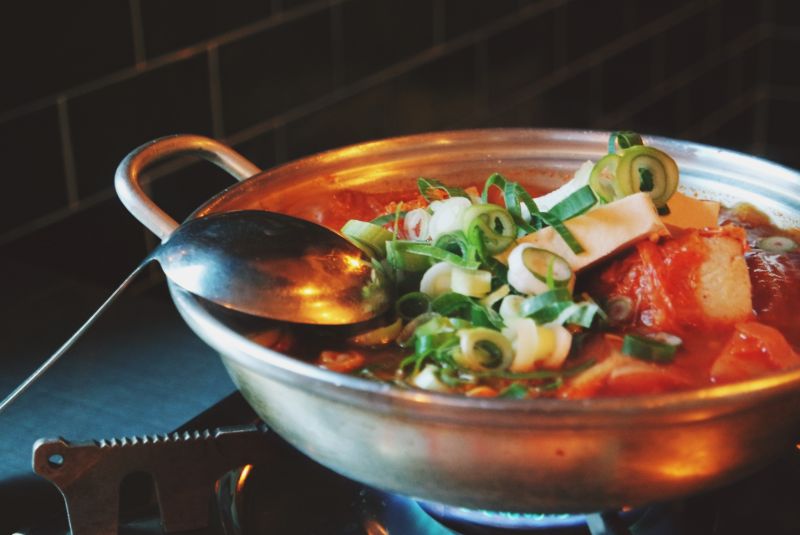
For those whose mission it is to work their way through a Korean cuisine bucket list, no visit to the country would be complete without sampling samgyeopsal – Korean pork BBQ – and Geumdwaeji (Goldpig) Sikdang’s is unsurpassed. A humble but much-loved native dish, exec chef Park Su-kyoung uses only the finest cuts of a native cross-breed, which combines the best of Yorkshire, Berkshire and Duroc pork, its texture firm and meaty, with plenty of juicy fat providing the perfect balancing act. A fan of K-pop? Keep your eyes peeled for superstar boy band BTS – this is their favourite place to dine in Seoul.
Miro Sikdang, Seoul, Korea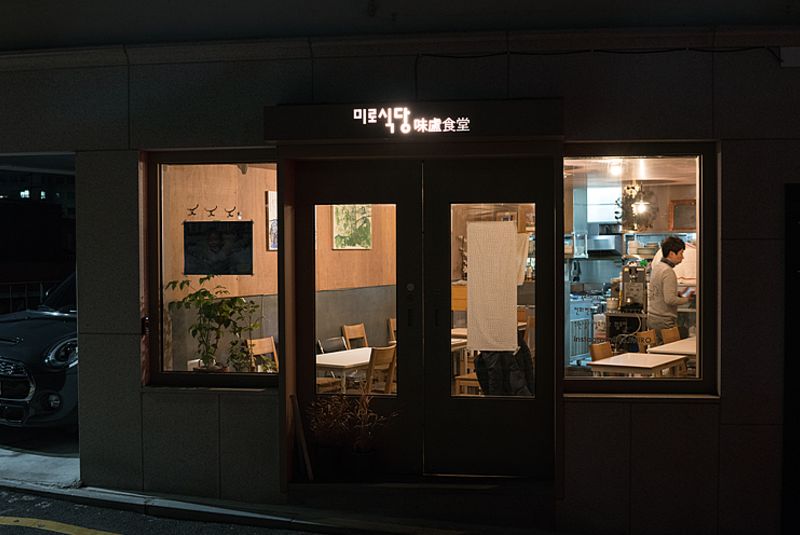
With its salt-of-the-earth, family-style Korean cuisine (including seafood spring onion pancakes), Miro Sikdang nails it. With only five tables, intimacy is a given, while chef-owner Miro Park has a keen eye for sourcing only the freshest, seasonal ingredients. Best-sellers include bulgogi – literally ‘fire meat’, thin, marinated sliced beef or pork grilled or griddled – those aforementioned pancakes and a fiery whelk salad. And it’s telling that Seoul’s top chefs like to come here when off duty.
SRI LANKA
Café Kumbuk, Colombo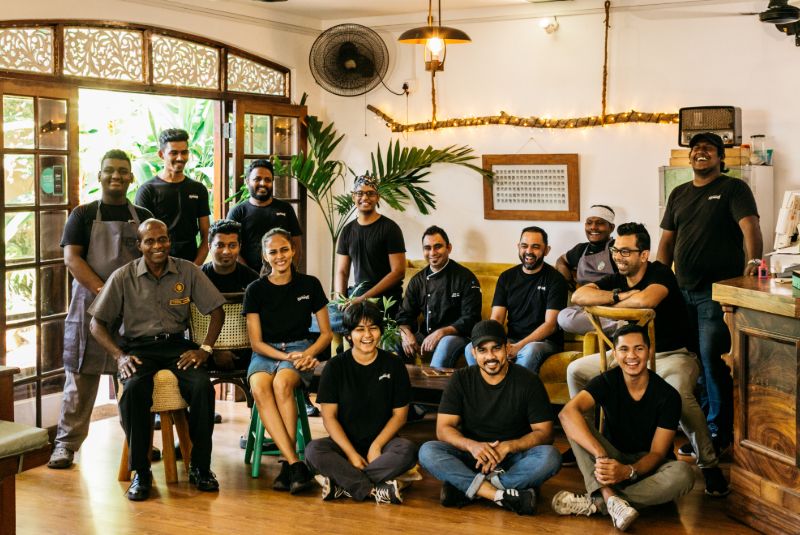
Mother-and-daughter duo Dinali and Shana Dandeniya started this bright, health-focused café after Shana returned to her hometown from studying at university in London. Named after a Sri Lankan tree, the restaurant focuses on locally sourced produce and well-balanced plates – think crispy fish tacos and key lime pie with no refined sugar. The team proudly supports local artisans, selling their produce through the Kumbuk Pantry.
Paradise Road: The Gallery Café, Colombo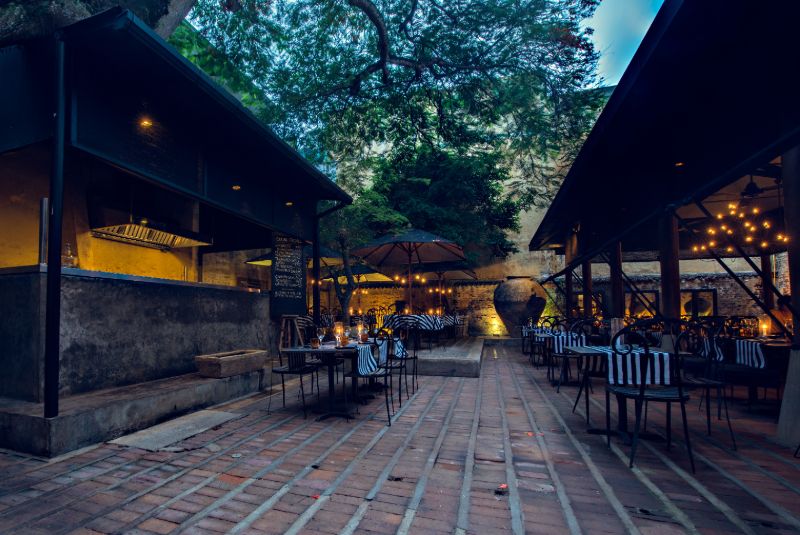
Housed in the former office complex of world-renowned Sri Lankan architect Geoffrey Bawa, The Gallery Café is located in a stunning outdoor space overlooking a beautiful pool and courtyard with rotating monthly art exhibitions. The menu is eclectic, with local and international dishes like baked crab, Indian butter chicken and pad Thai. Don’t miss the extensive dessert menu, featuring over 30 items from double chocolate cheesecake to lemon meringue pie.
Mettha’s Traditional Home Cooked Meals, Unawatuna
Located in the beautiful, palm-tree-lined beach town of Unawatuna, just south of Galle, Mettha’s serves authentic home-style Sri Lankan food at affordable prices. Run by charming Mettha and her husband, the tiny restaurant serves dishes such as banana flower curry and jackfruit curry, as well as freshly squeezed juices. Vegans and vegetarians are well catered for.
TAIWAN
Akame, Pingtung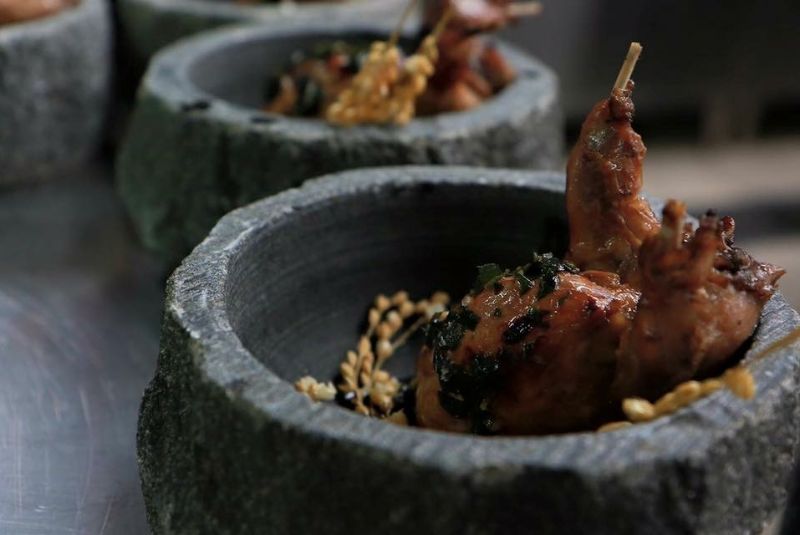
Nestled in the mountainous south of Taiwan, Akame, which means ‘grill’ in the language of the local Rukai tribe, pays tribute to the island’s indigenous people and their deep, sacred bond with nature. Chef Alex Peng, a descendent of Rukai, sources ingredients and produce from surrounding villages and forests for use in compelling contemporary dishes that are all cooked over a traditional wood fire.
Yu Li Cultural Bookstore and Community Kitchen, Taichung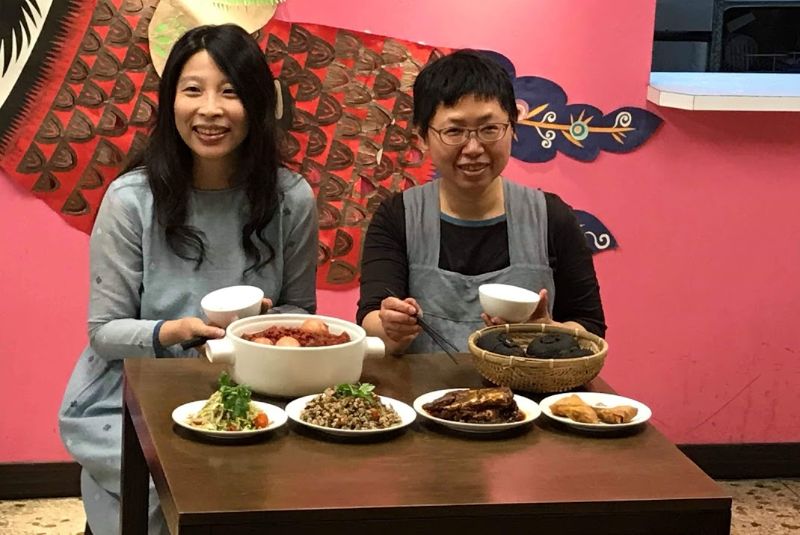
Also known as Shoal Enrichment Path, this is much more than a bookstore, it’s a kitchen with a conscience and community centre founded by two women, Wen-Wen Su and Kuei-Huai Tao. Dishes change daily, depending on what is in season and on hand. The enterprise supports female survivors of sexual assault and domestic violence and provided food to a man eventually freed from death row after more than a decade in prison, in a high-profile case of wrongful conviction.
Huang’s Lu Rou Fan, Taipei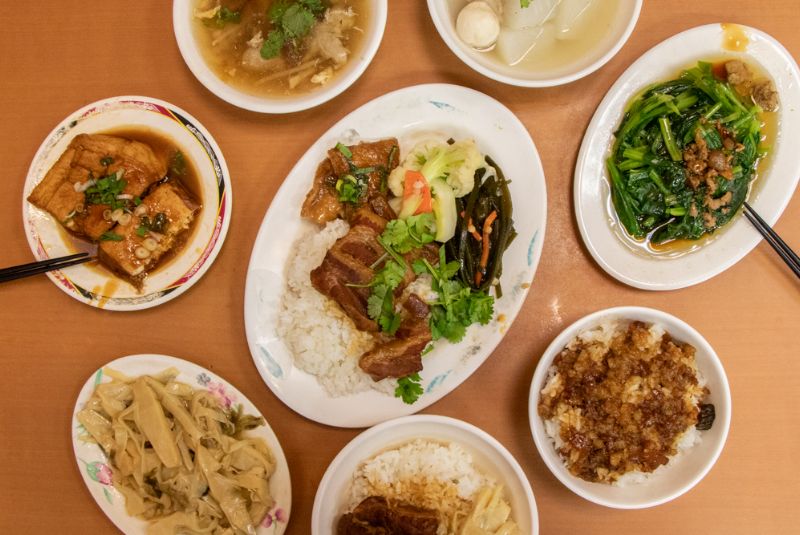
Image: Tingyin Hsueh
Lu rou fan, braised minced pork over steamed rice, is an everyday dish enjoyed by everyone in Taiwan. Of the hundreds of stalls and restaurants selling it, Huang’s has been a favourite of locals since opening more than 30 years ago. It’s prices are low, so don’t be afraid to order the minced pork, braised pork belly and braised pork hock all at once. You’ll have to ask local guides for its (semi-secret) location.
Plants, Taipei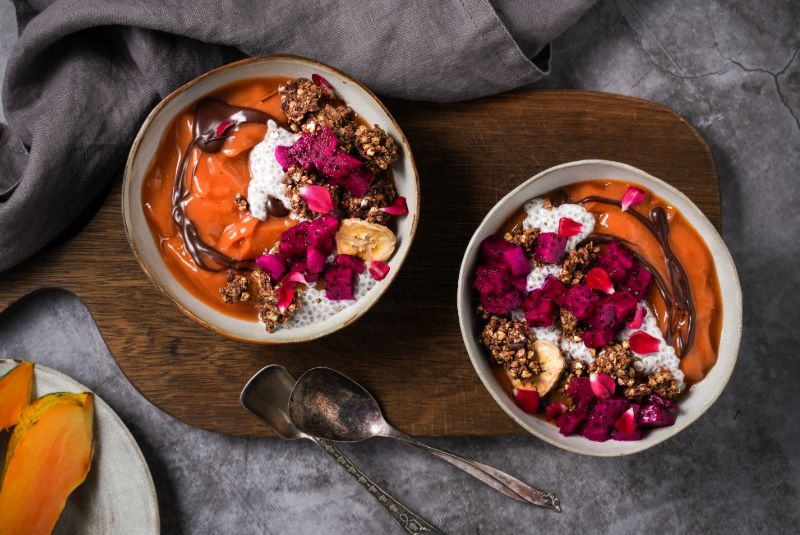
Launched in 2016, Plants is the first entirely plant-based, gluten- and dairy-free eatery in Taipei. True to this ethos, all fruit and vegetables are organic and sourced from local farmers. The menu spans energy bowls to salads and its raw cakes are a hit. Co-founders Lily and Square are also life partners and run a LGBTQ+-friendly space.
THAILAND
100 Mahaseth, Bangkok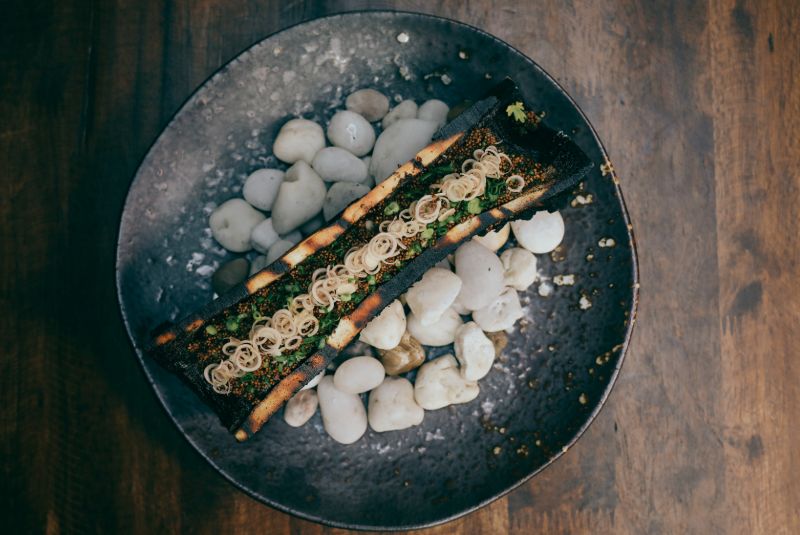
Chef Chalee Kader’s root-to-fruit, nose-to-tail and farm-to-table approach to dining had already won plaudits, but it’s his 100 Smile Meals initiative to help farmers and suppliers during the pandemic that deserves special mention. Instead of simply handing out food, Kader sought cash donations from the public, which could then be used to buy produce from suppliers and farmers without depleting his limited cash reserves, thereby providing a living to overlooked partners in the restaurant ecosystem.
Barefood Bangkok, Bangkok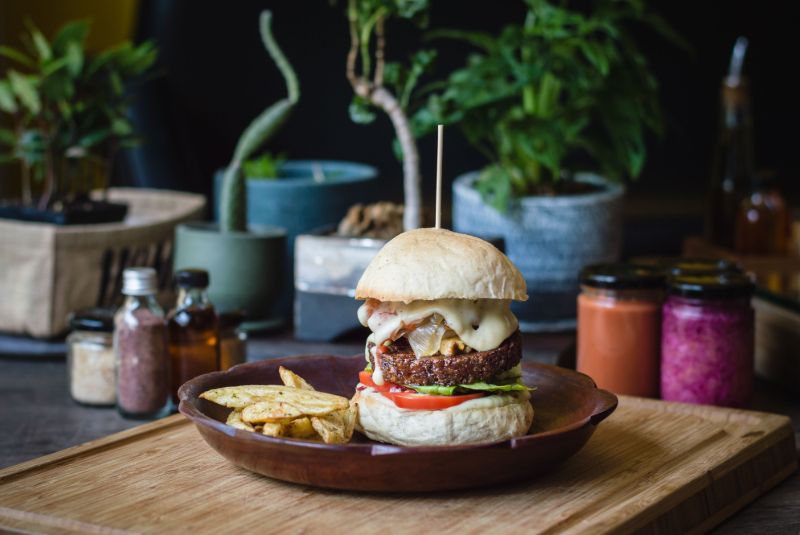
What started in 2016 as a project by chef Edoardo Bonavolta and business partner Taksina Nuangsri to produce cultured vegan cheeses has grown into a destination for plant-based foods. Their cashew cheeses remain at the core of the restaurant and include pure cashew cheese, cashew ricotta, herb and Thai chilli cheese, which customers have reportedly been unable to distinguish from the dairy version in blind tastings.
Na Café at Bangkok 1899, Bangkok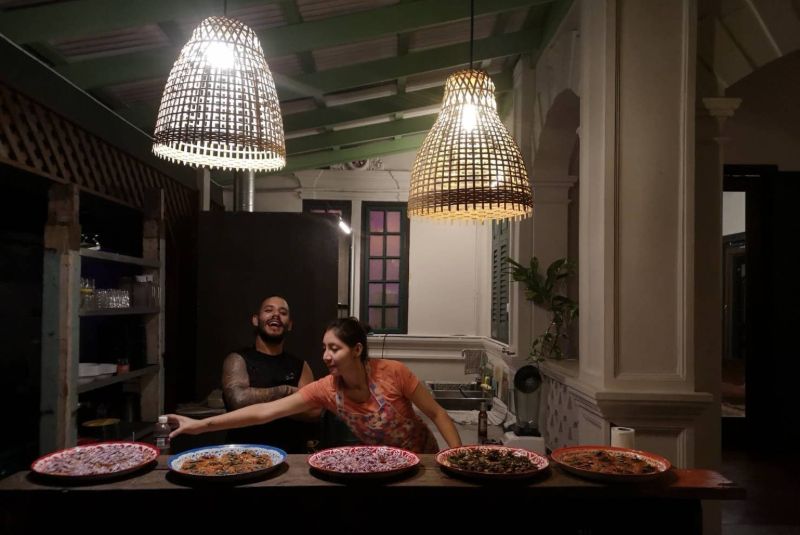
Art, design, food and social betterment come together at Bangkok 1899, a female-led cultural and civic hub with a café that promotes positive change through food and beverage. Drinks are made in-house using local ingredients, as is the food, which changes according to the chef in residence (currently Peruvian), though a Thai menu is always available. The café runs a zero-waste programme, which includes turning old juices and drinks into clothes dye. Training programmes for at-risk youth and refugees is also provided.
Wattana Panich, Bangkok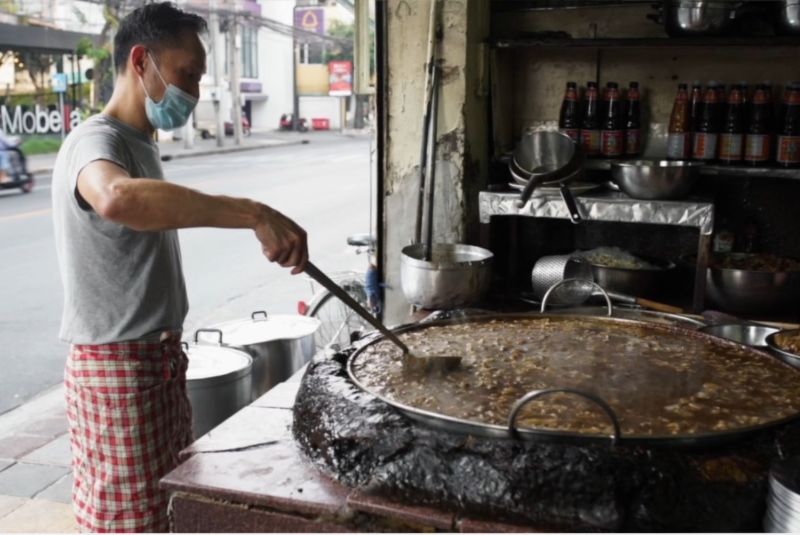
Nattapong Kaweeantawong has a legacy to preserve, both physical and metaphorical. The physical is a master stock that’s been bubbling away for more than 40 years and the metaphorical is his family restaurant’s legacy. The stock is the secret sauce that has brought the family’s beef noodle soup such acclaim, with meat that’s been simmered for hours in a giant pan and is heady with a viscous blend of star anise, garlic, black pepper, coriander root and other mystery spices.
Locus Native Food Lab, Chiang Rai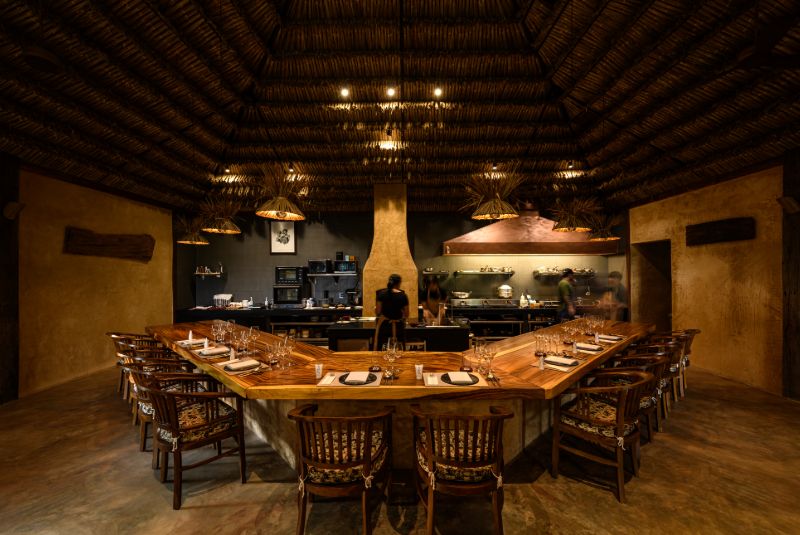
The lush, mountainous terrain of Northern Thailand is home to several hill tribes, each culturally distinct but with close ties to the land. It is their food that chef Kongwuth Chaiwongkachon interprets, albeit through a fine dining lens. The multi-course tasting menu takes a twist at the end, when the contemporary version of every dish eaten is presented once again, but this time in all its rustic glory.
Samuay & Sons, Udon Thani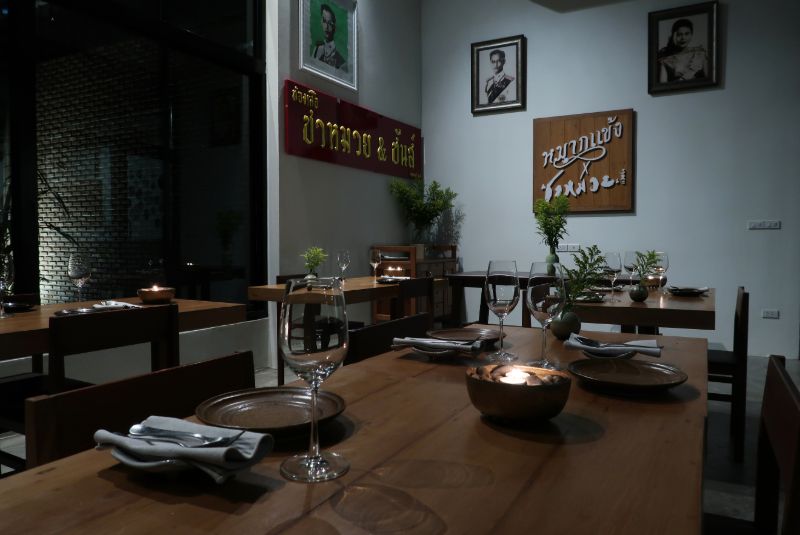
In the far north-eastern reaches of Thailand, near the Laos border, Weerawat ‘Num’ Triyasenawat is cooking food unlike anywhere else. Num forages and fossicks for all manner of local and indigenous ingredients, working closely with local farmers, suppliers and artisans to create contemporary Isaan cuisine. Triyasenawat also hosts education and training workshops to help farmers promote their work and preserve indigenous wisdom and traditions.
VIETNAM
Pho Gia Truyen, Hanoi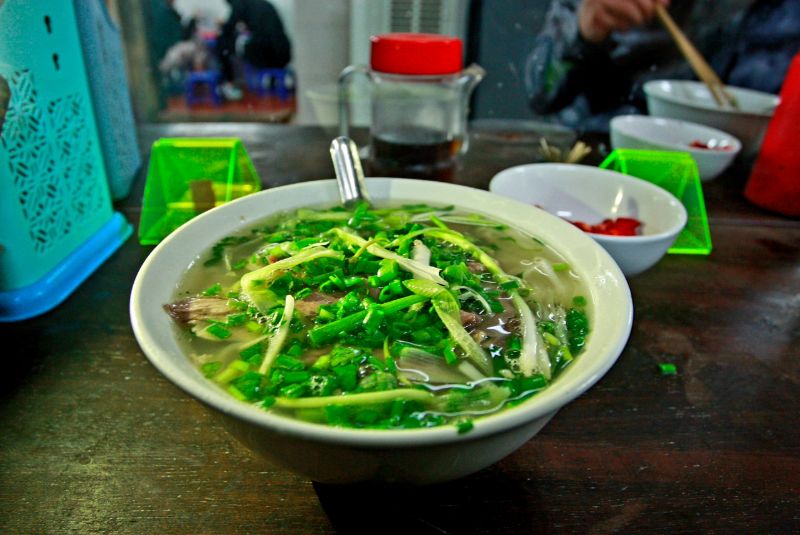
Image: Quang Anh
Easy to recognise from the line of people outside, Pho Gia Truyen is small in size but mighty in reputation, with many claiming it serves the finest pho in Hanoi. It is best known for its beef pho, served with fresh slices of stewed beef, light rice noodles and crispy, savoury doughnut sticks that are born to be dipped to soak up the broth.
Ngoc Suong Seafood & Bar, Ho Chi Minh City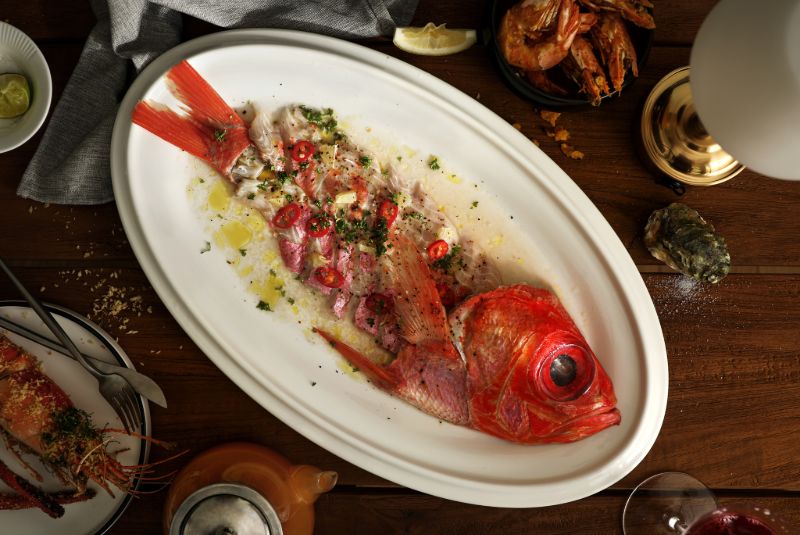
A family-run restaurant spanning four generations, Ngoc Suong originally opened as a casual seafood eatery in coastal Cam Ranh in 1955 when its founder was a village chief who served his locals socially, as well as with food. Today’s restaurant, which opened in early 2020, is more modern and refined but still serves its community by cooking for those in need and acting as a meeting place for local musicians, foodies and business people. For the full experience, try chef Vinh Q Le’s tasting menu with its abalone trio and deconstructed hotdog.
Pizza 4P's, Ho Chi Minh City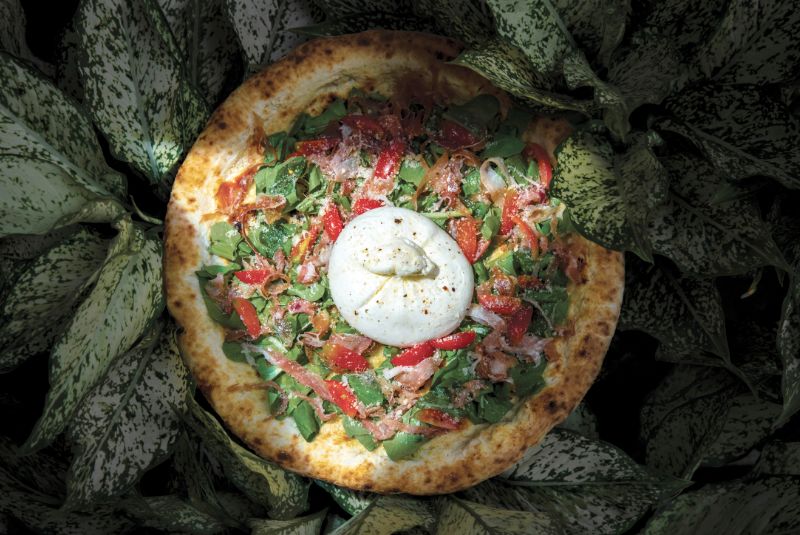
A pizza restaurant with a twist, 4P’s is run by a Japanese couple and sells salmon sashimi pizza, teriyaki chicken pizza and even a vegan version with lotus and Japanese seaweed, as well as other fusion foods. While its combinations are unusual, it is a firm favourite with locals and now has 25 outposts across Vietnam. Its owners are also local heroes, having fed front-line workers during the pandemic. The name 4P’s actually means ‘for peace’, reflecting its extensive sustainability practices and efforts to make the world a better place.
Madam Khanh – The Banh Mi Queen, Hoi An
Image: Fred Wissink
Hailed as the best place for banh mi in Hoi An (and possibly in all of Vietnam), this casual shop has been run by Madam Khanh for more than 30 years. The cook, now in her 80s, makes up to 200 baguettes a day, stuffing them with spicy, succulent fillings such as fried eggs with papaya and cucumber, or pork with barbecue sauce. Once you’ve tried one, you’ll have no doubt why they call her the banh mi queen.
Reporting by Cheryl Tiu, Kee Foong, Laura Price, Evelyn Chen and Julie Alpine
The ninth edition of the Asia’s 50 Best Restaurants list, sponsored by S.Pellegrino & Acqua Panna, will be revealed on Thursday, 25th March, through a digital awards show on Facebook and YouTube. To stay up to date with the latest news and announcements, follow us on Instagram, like us on Facebook, find us on Twitter #Asias50Best and subscribe to our YouTube channel.
